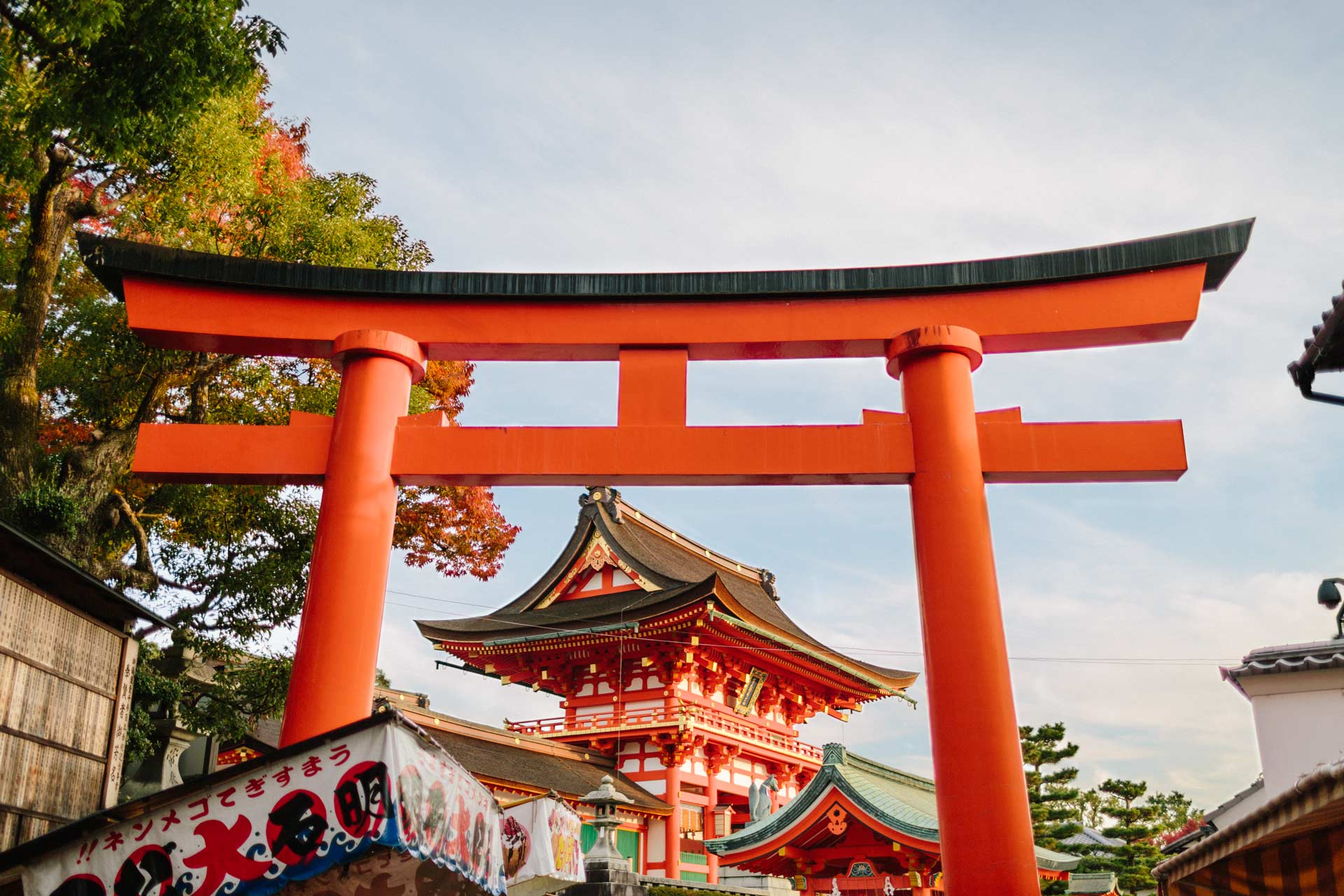
Over the past few months we have been detailing our travels across Japan that took place just over a year ago. In Part 1, we arrived in Tokyo, and in Part 2 we made our way to Fujisan and Yudanaka’s hot springs. This, is Part 3.
It had been six hours worth of train rides from Yudanaka to Kyoto and we arrived just as the sun was starting to set. We hopped off of our train and walked under and through Kyoto Station’s marvellous architecture, rushing over to the taxi stands so we could acquaint ourselves with the city in the little bit of daylight that was left.
In our time there, we came to realize that Kyoto is a city donning many different hats, and at its core, is the melting pot of Japan’s past and present.
Kyoto is probably most famous for its over 1600 temples — the very reason we found ourselves in Japan’s former capital. But in our time there, we came to realize that Kyoto is a city donning many different hats, and at its core, is the melting pot of Japan’s past and present. The result is historical landmarks surrounded by modern architecture and sophisticated shopping districts, a duality that makes for some always interesting, occasionally jaw-dropping walks. For us however, it was the city’s intricate network of alleyways that really stuck out and where we spent most of our time exploring. The truth is, if you’re not on a main street in Kyoto, you’re probably in an alleyway, littered with hundred of bicycles, residents, shop-owners, and the occasional mini-truck trying to make its way through.
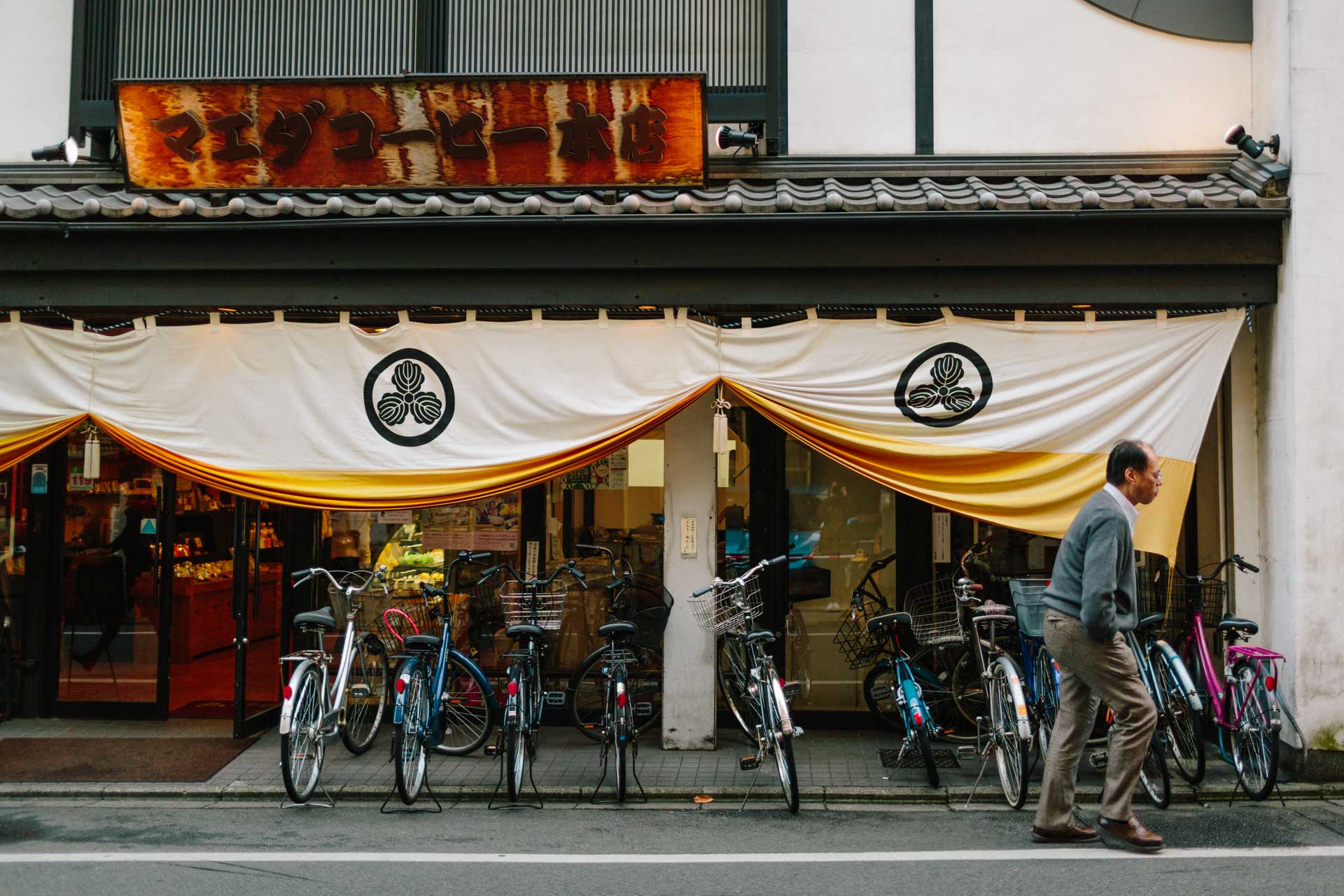
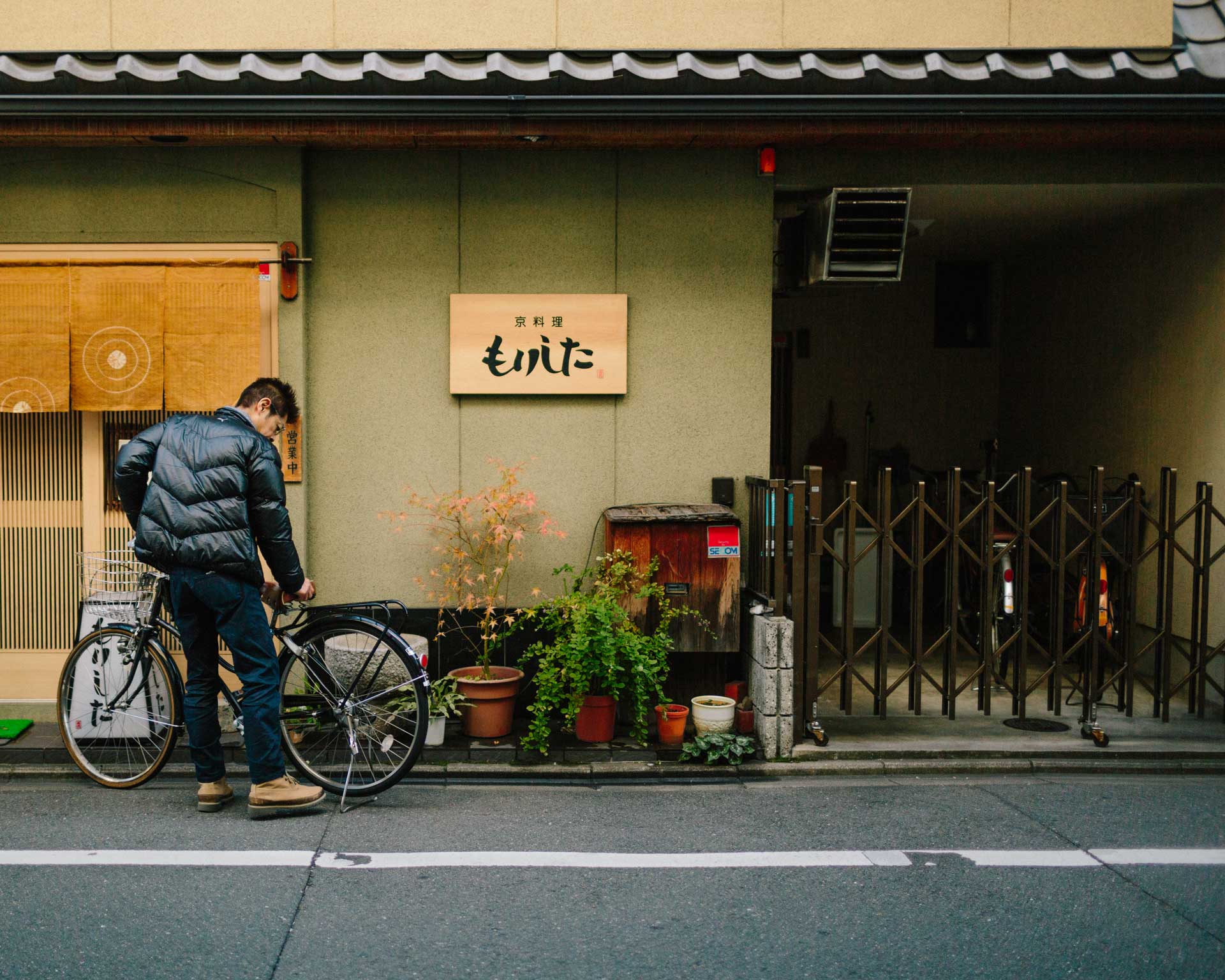

We checked into the Mitsui Garden, a sleek little boutique hotel off of one of these very alleyways. Like Kyoto, it blends modern design with Japanese cultural elements to create a really unique aesthetic. Small warning: if you constantly flip your pillow to the cool side throughout the night, you won’t be doing that here because they fill the underside of their pillows with a thin layer of rocks. It’s an interesting concept.


The following day, we went on a temple run. We took a bus up Gojo-Dori to southern Higashiyama, a bustling temple district within the city that’s also home to Gion, Kyoto’s traditional entertainment district (commonly referred to as the Geisha District). The first thing we did was visit the Kiyomizu-dera Temple.
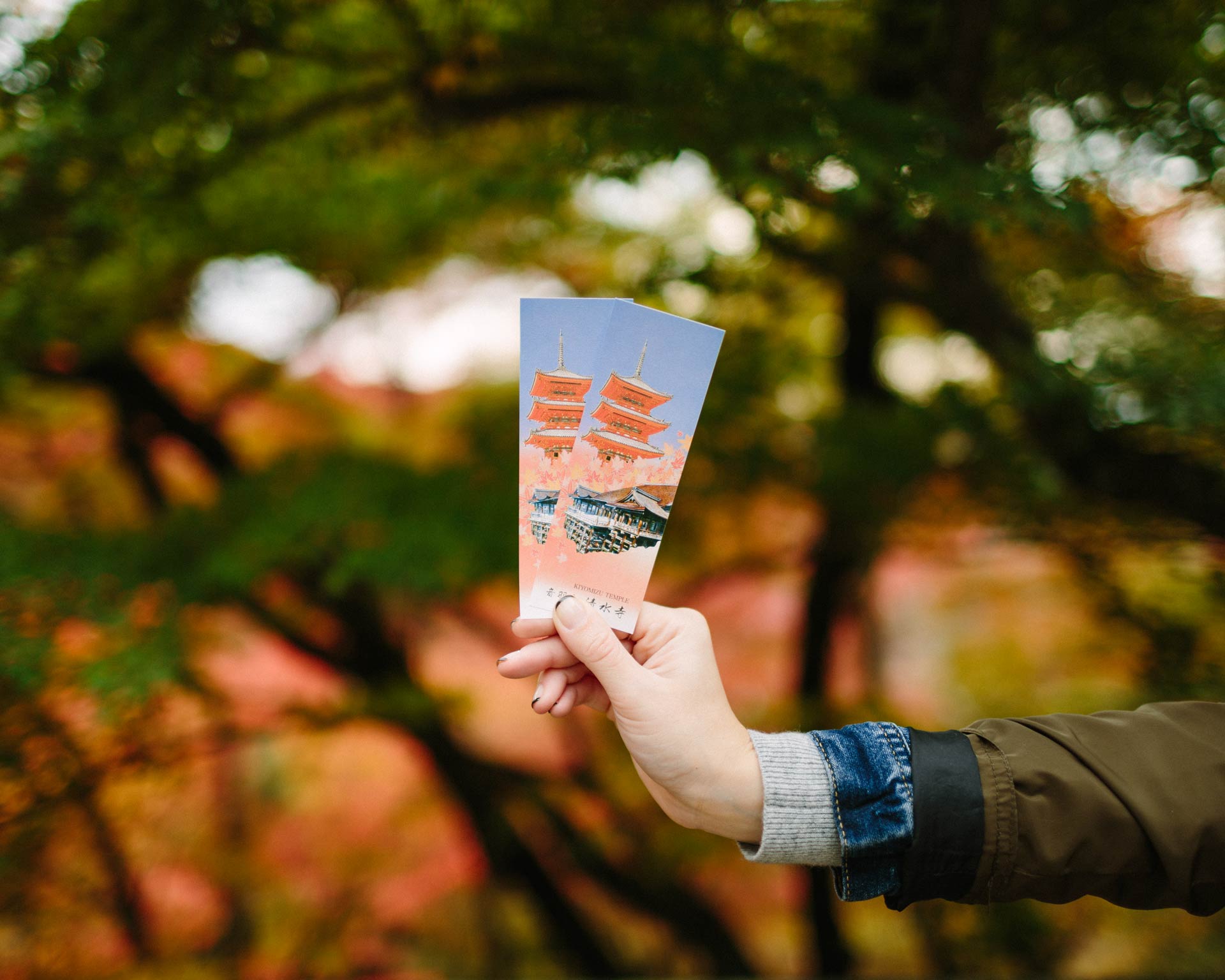
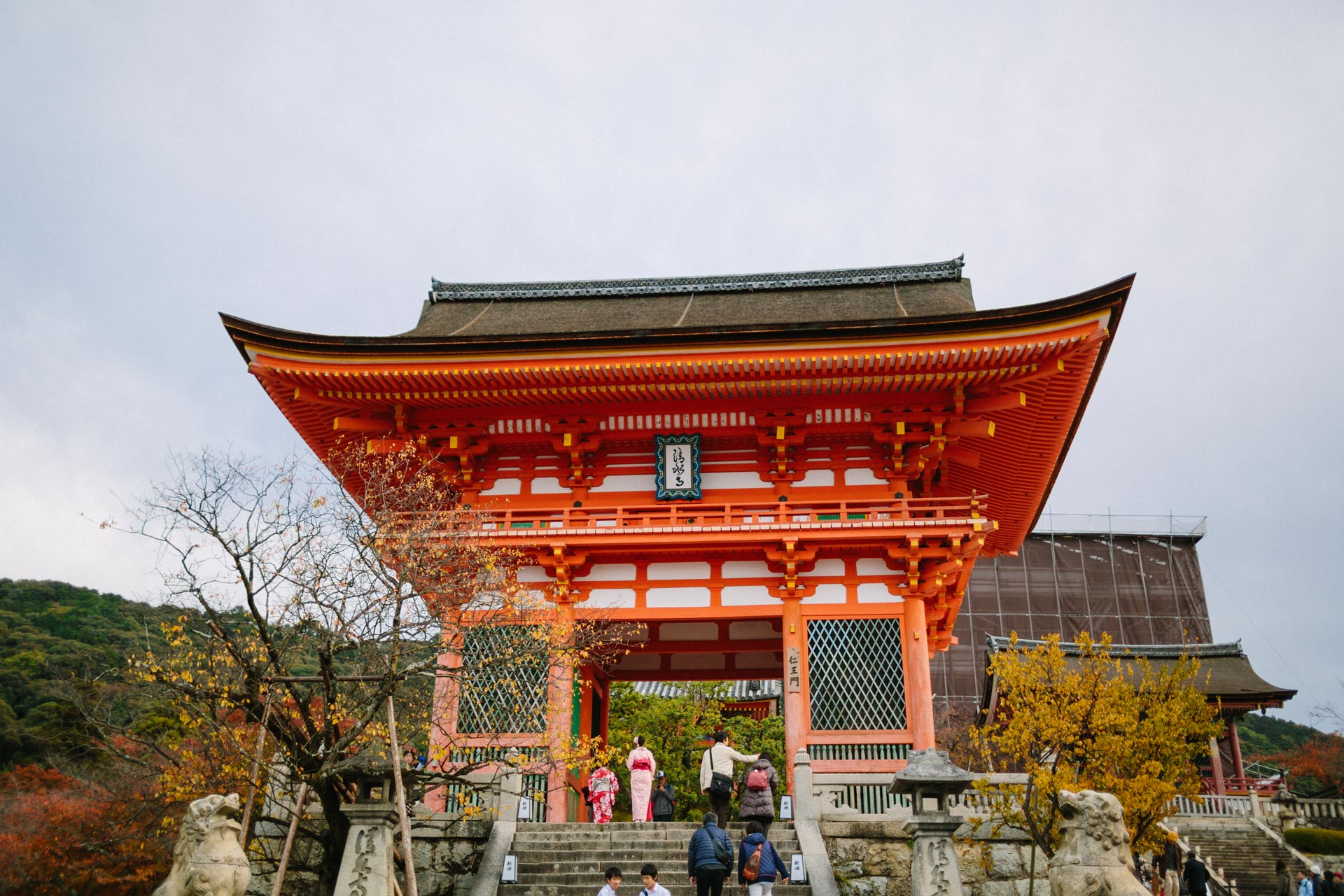
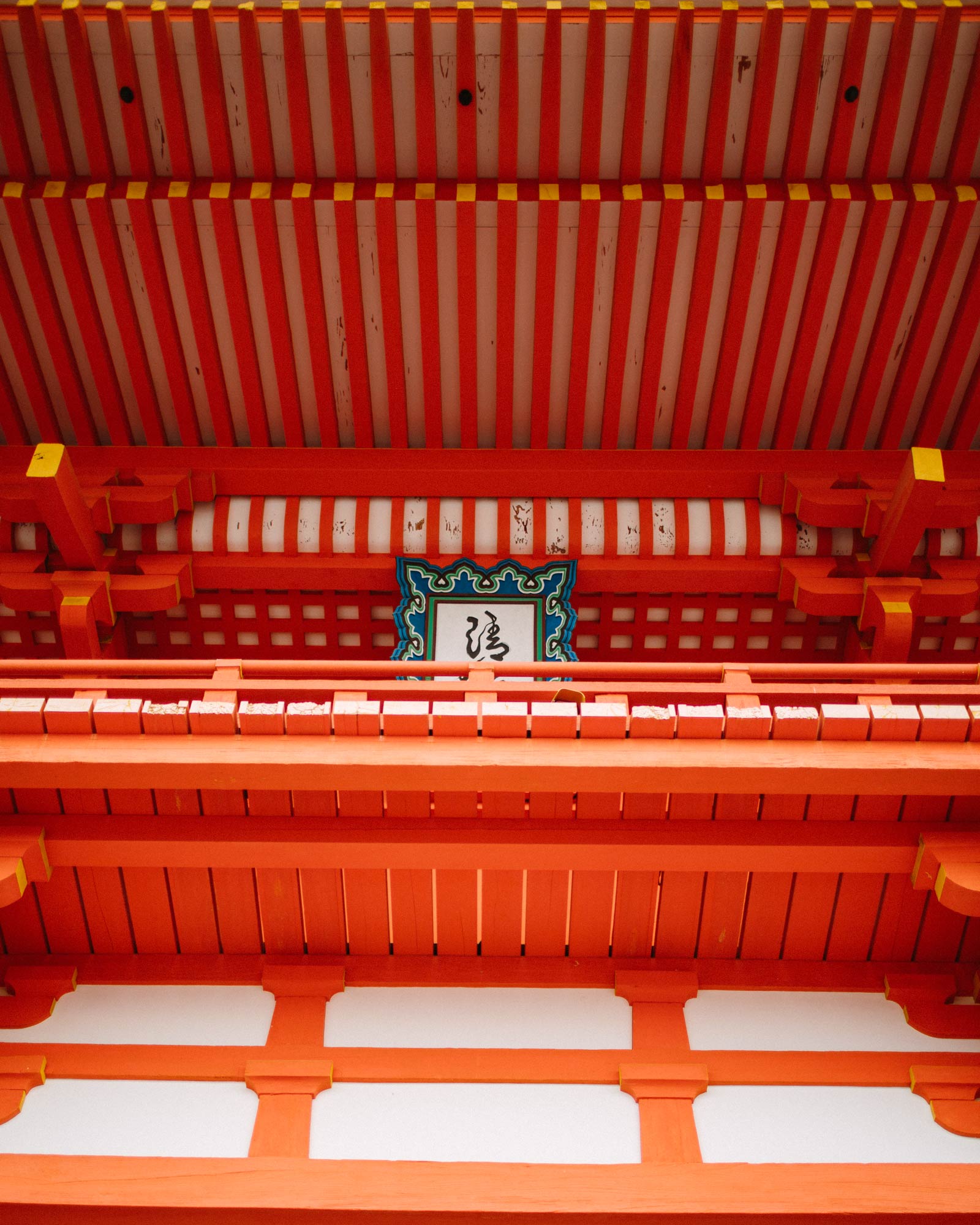
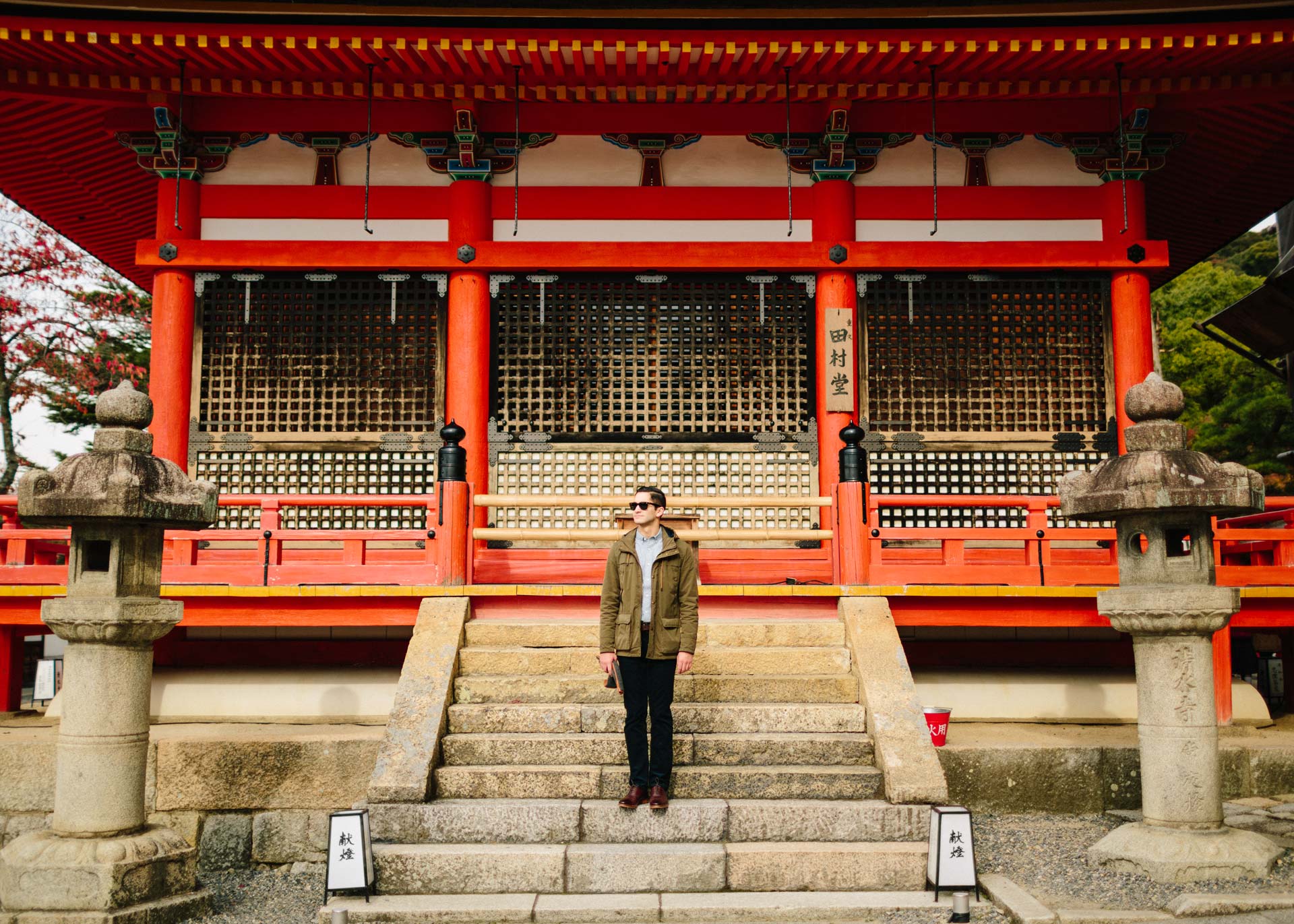
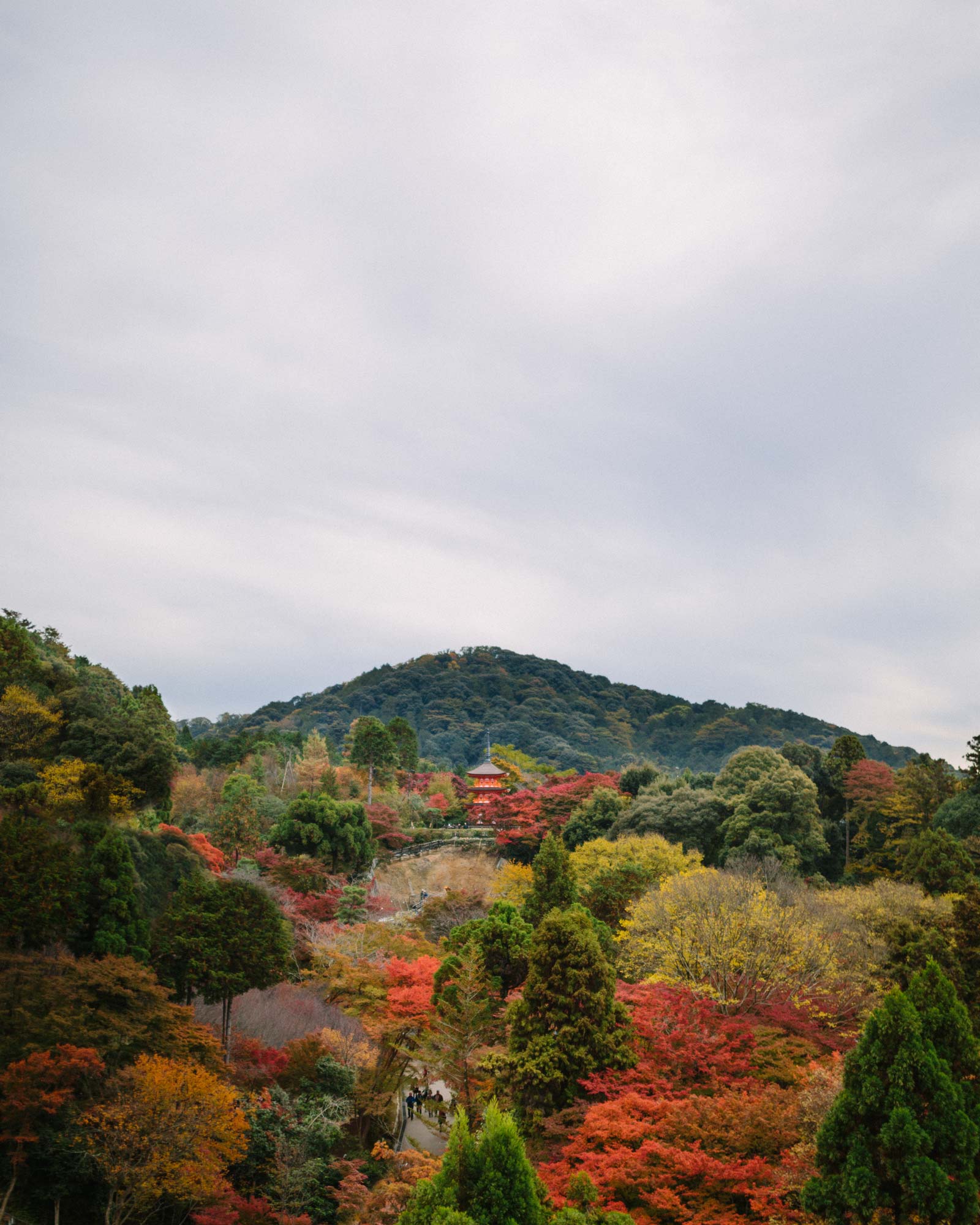

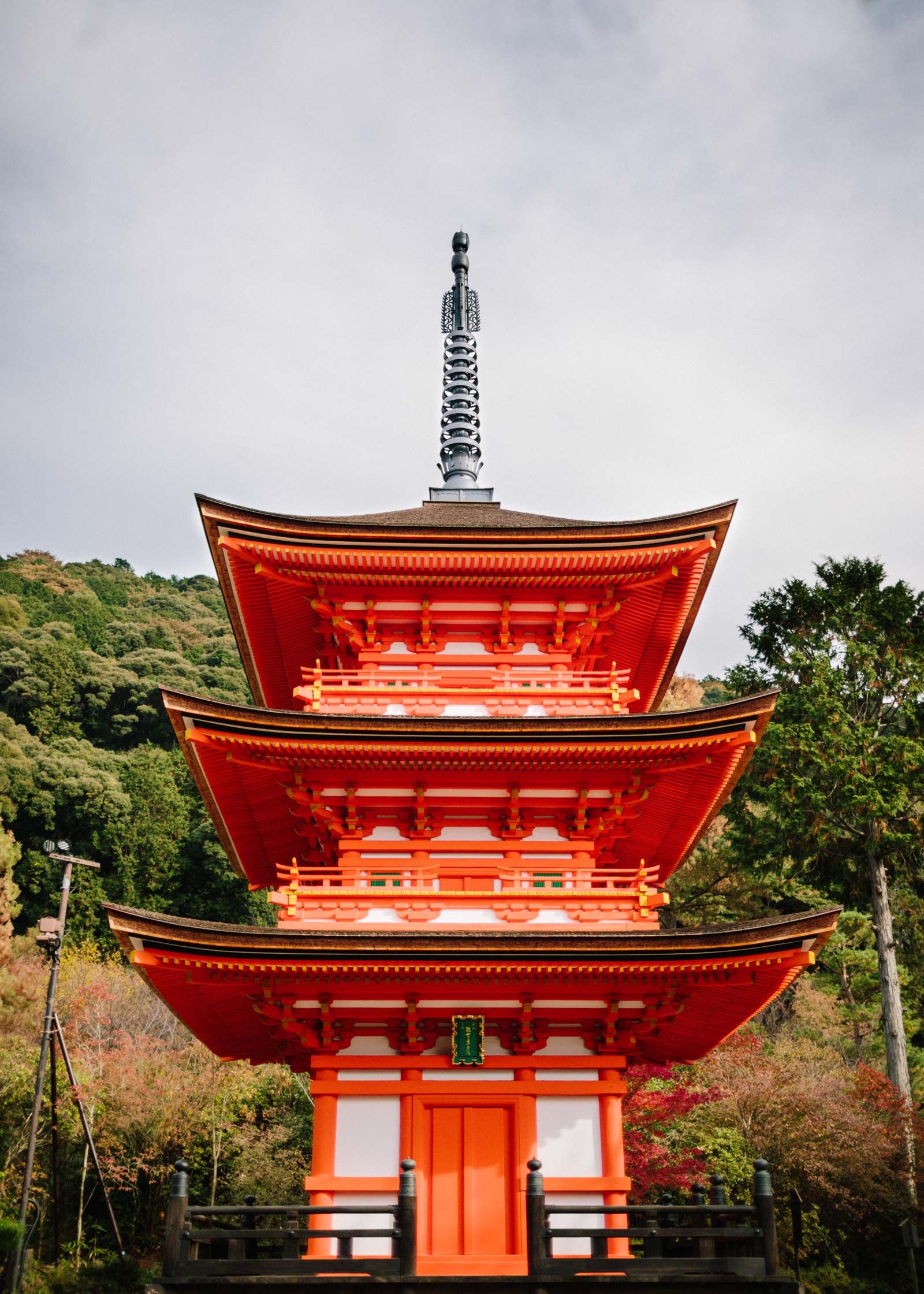
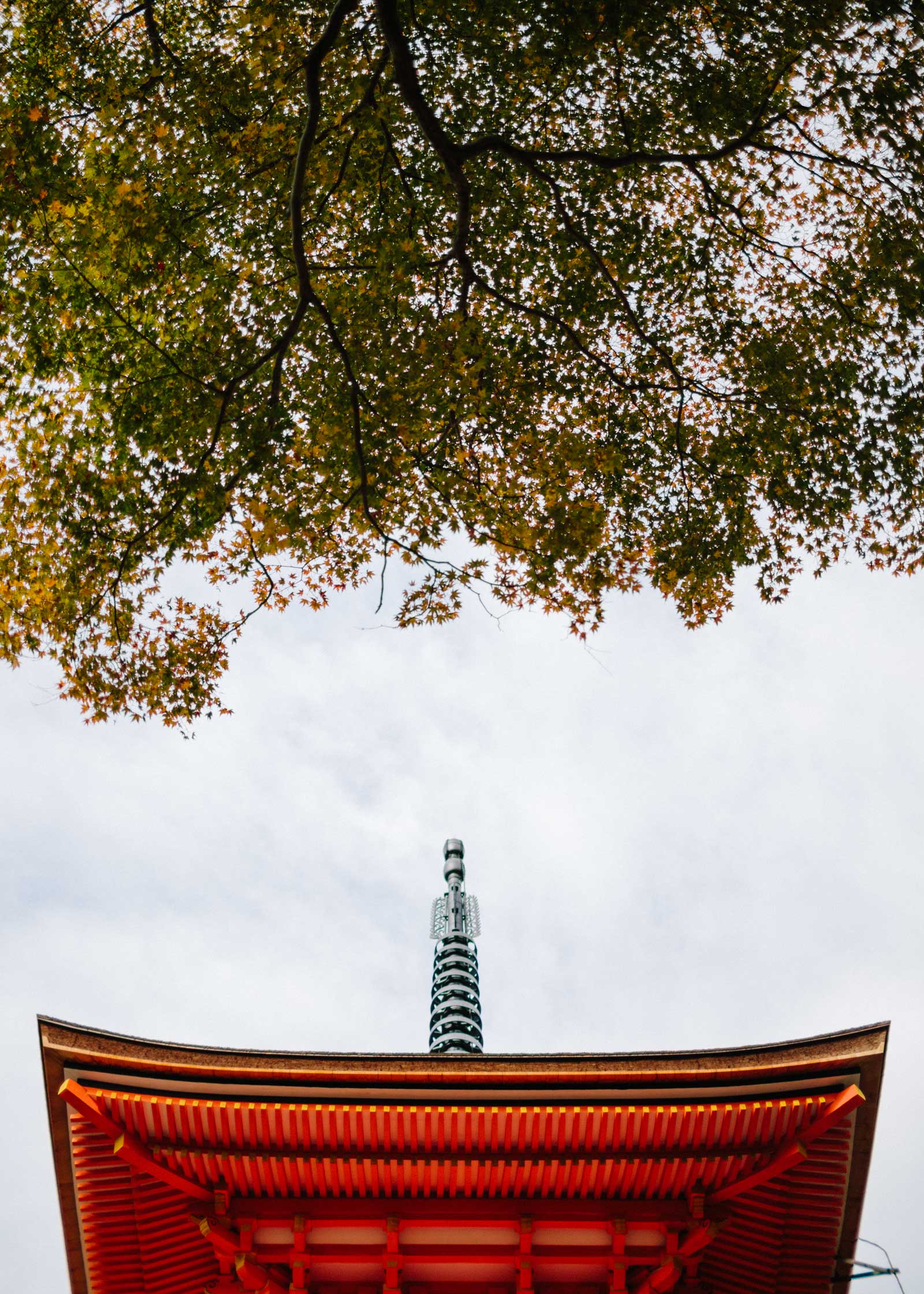
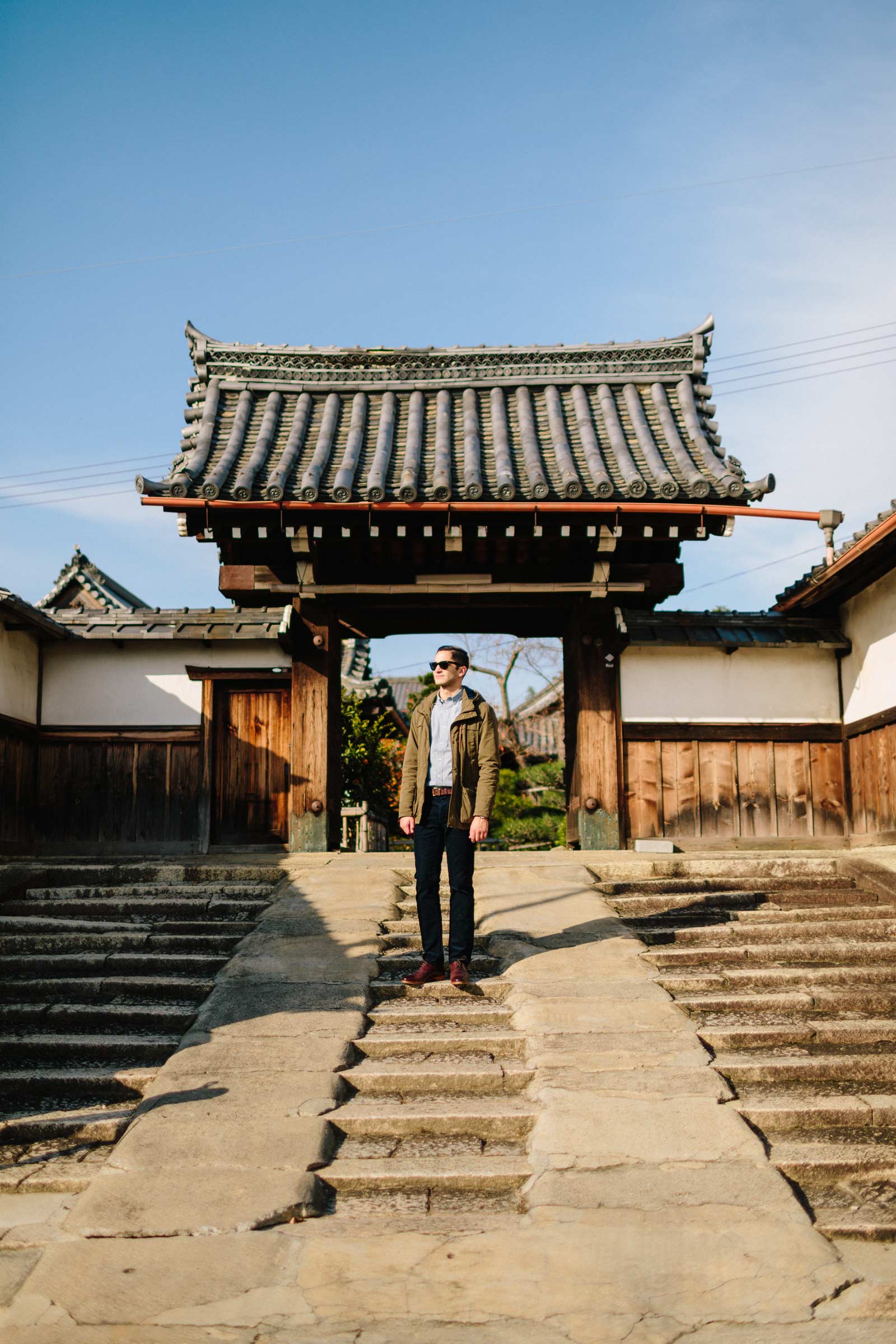


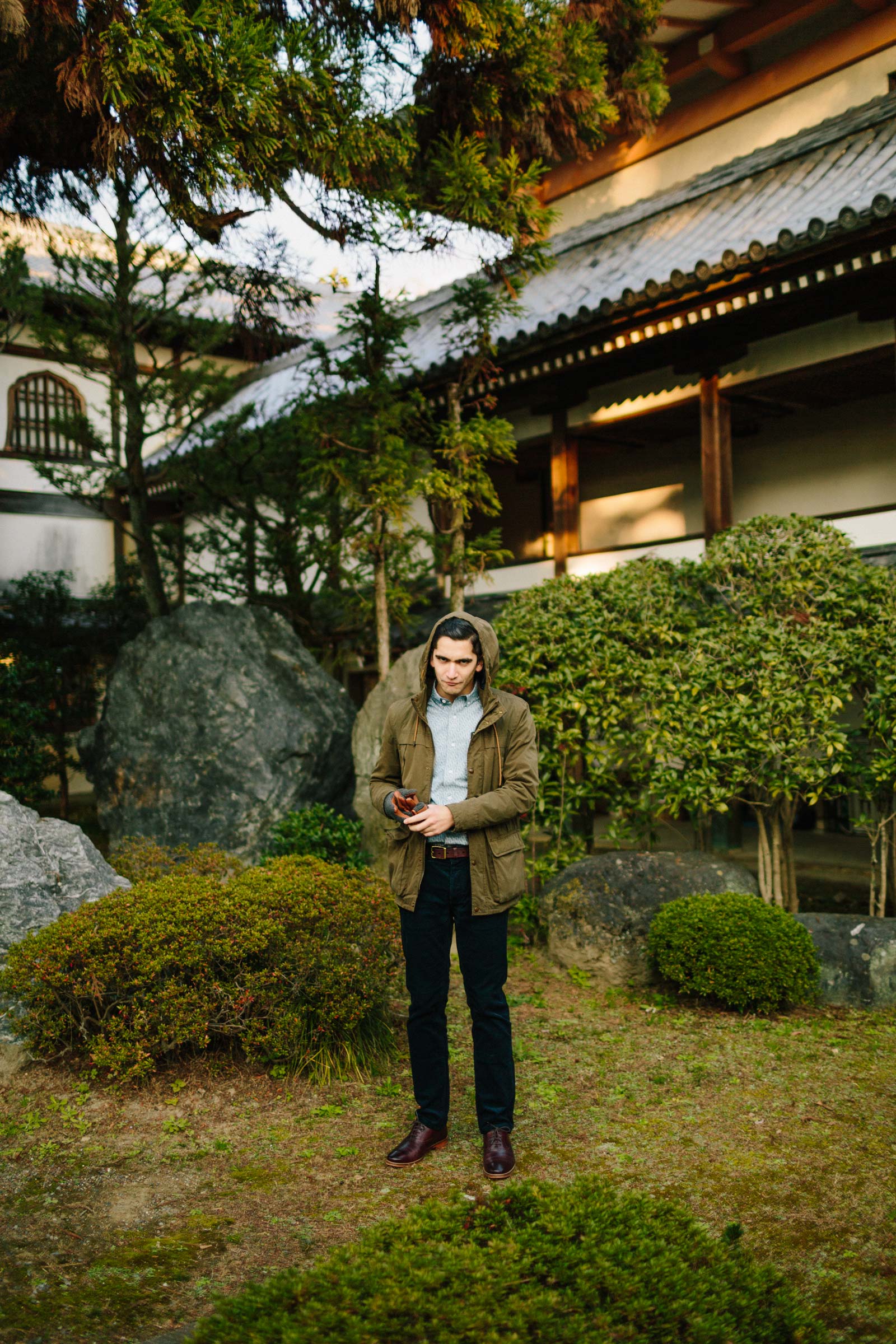
The point in the day where too many photos have been taken.
Now, full disclosure: despite of how amazing the sights and structures in Higashiyama were, we’d be lying if we didn’t mention that there was a pretty drastic disconnect between our expectations and the reality that awaited us. The temples themselves were overly commercialized to the point of feeling like a major attraction (there’s something very wrong about vending machines in ancient Buddhist temples) and it generally felt like a giant tourist trap. You pay a fee to get into different parts of each temple and are usually walking amidst swarms of tourists and natives coming out to admire the foliage. Perhaps the fall transition may have been too busy of a time to visit, or maybe the area is simply too close to the heart of Kyoto to ever be peaceful, but we’ve vowed to head straight to the more remote temples just outside the city the next time we’re in the area.
Nonetheless, we explored everything the area had to offer and, without really meaning to, stumbled into Gion, where we spotted a geisha-in-training.
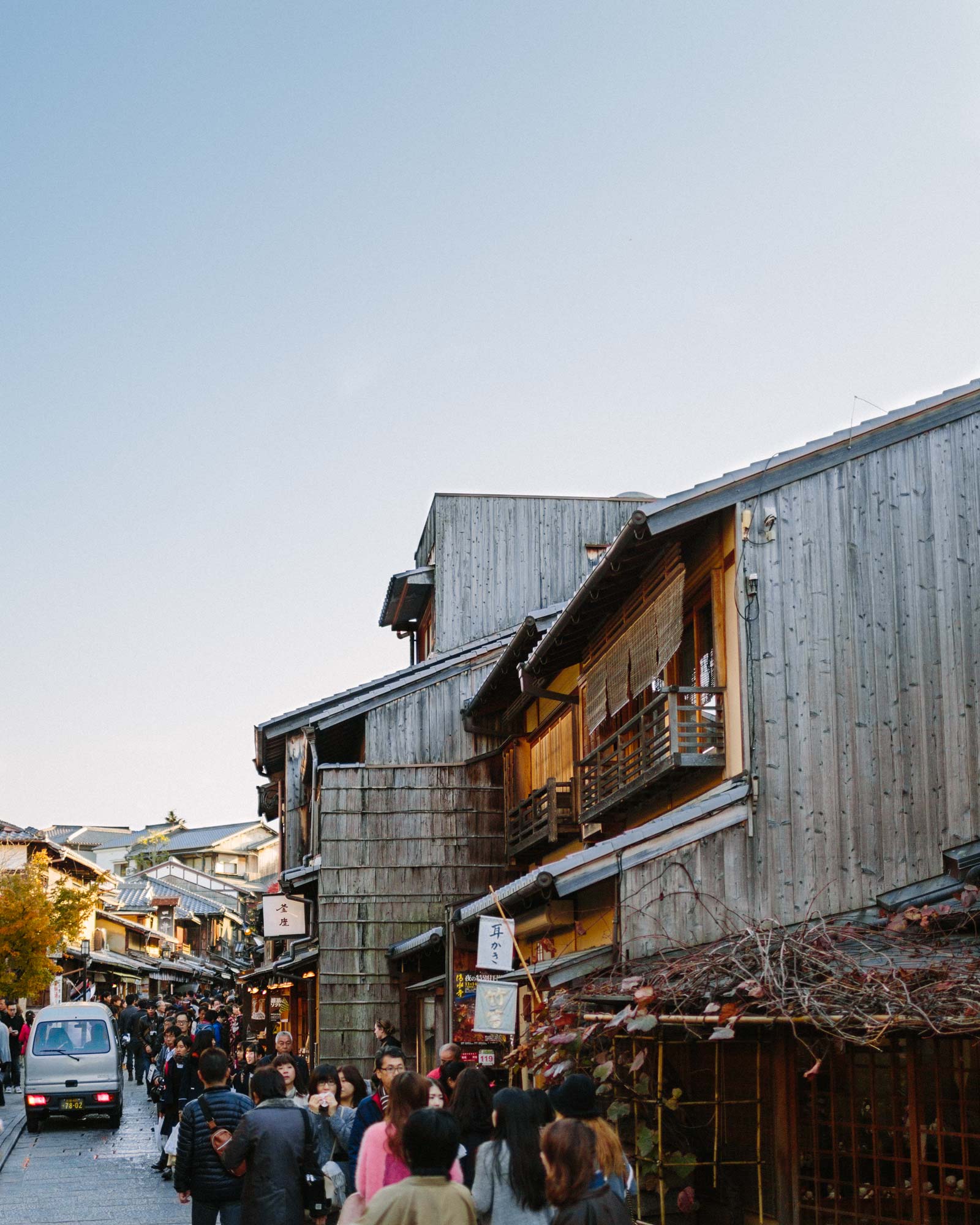
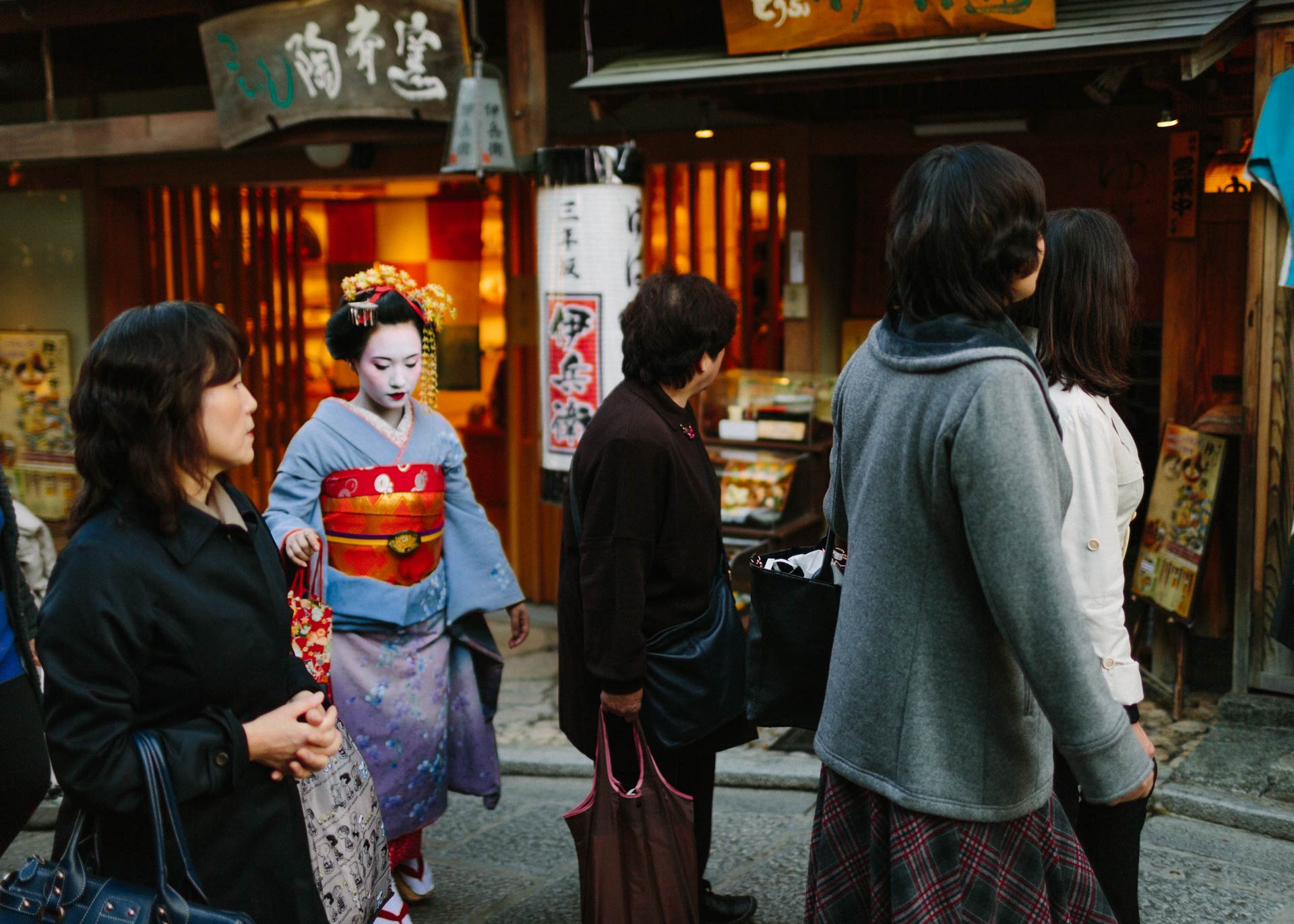
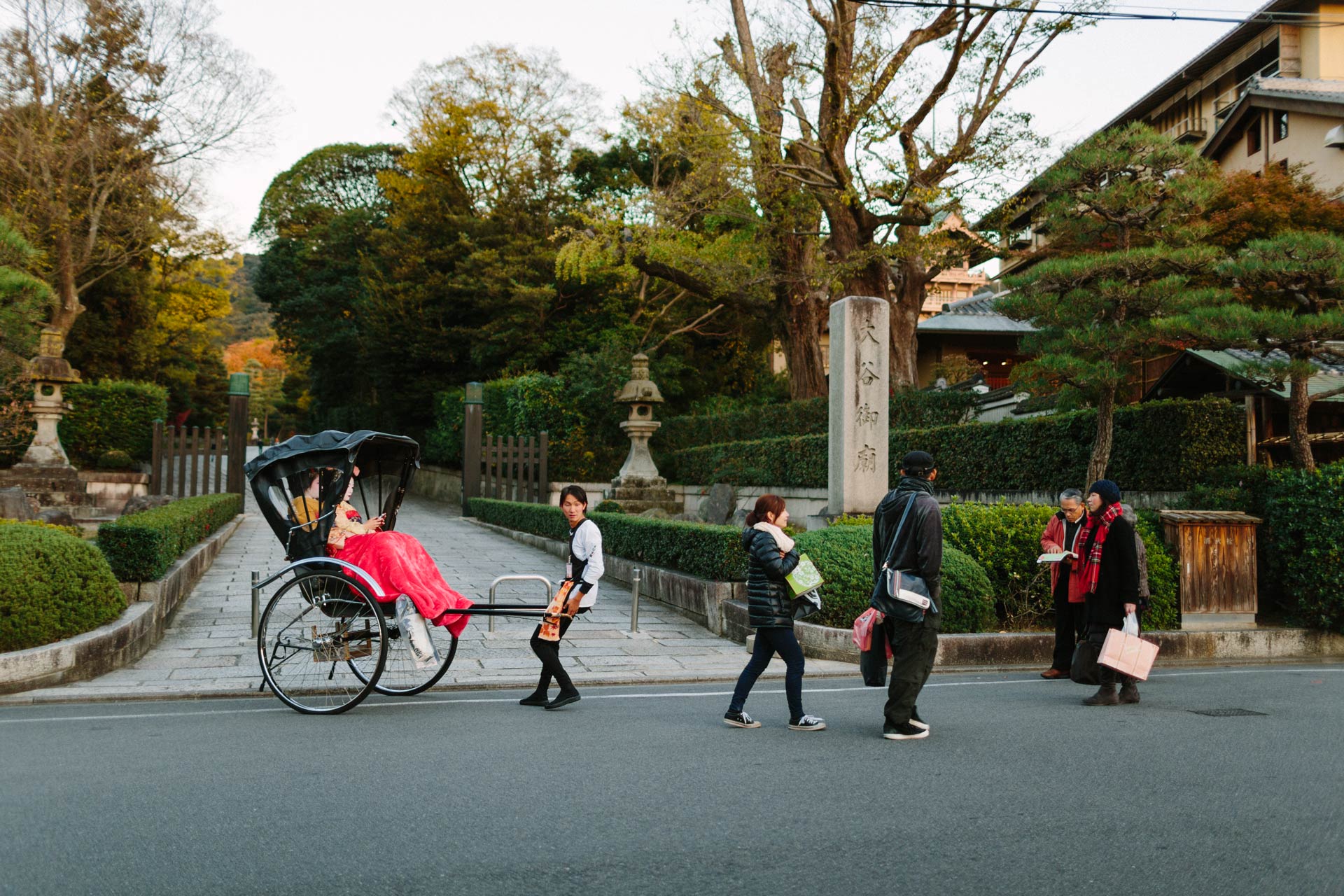
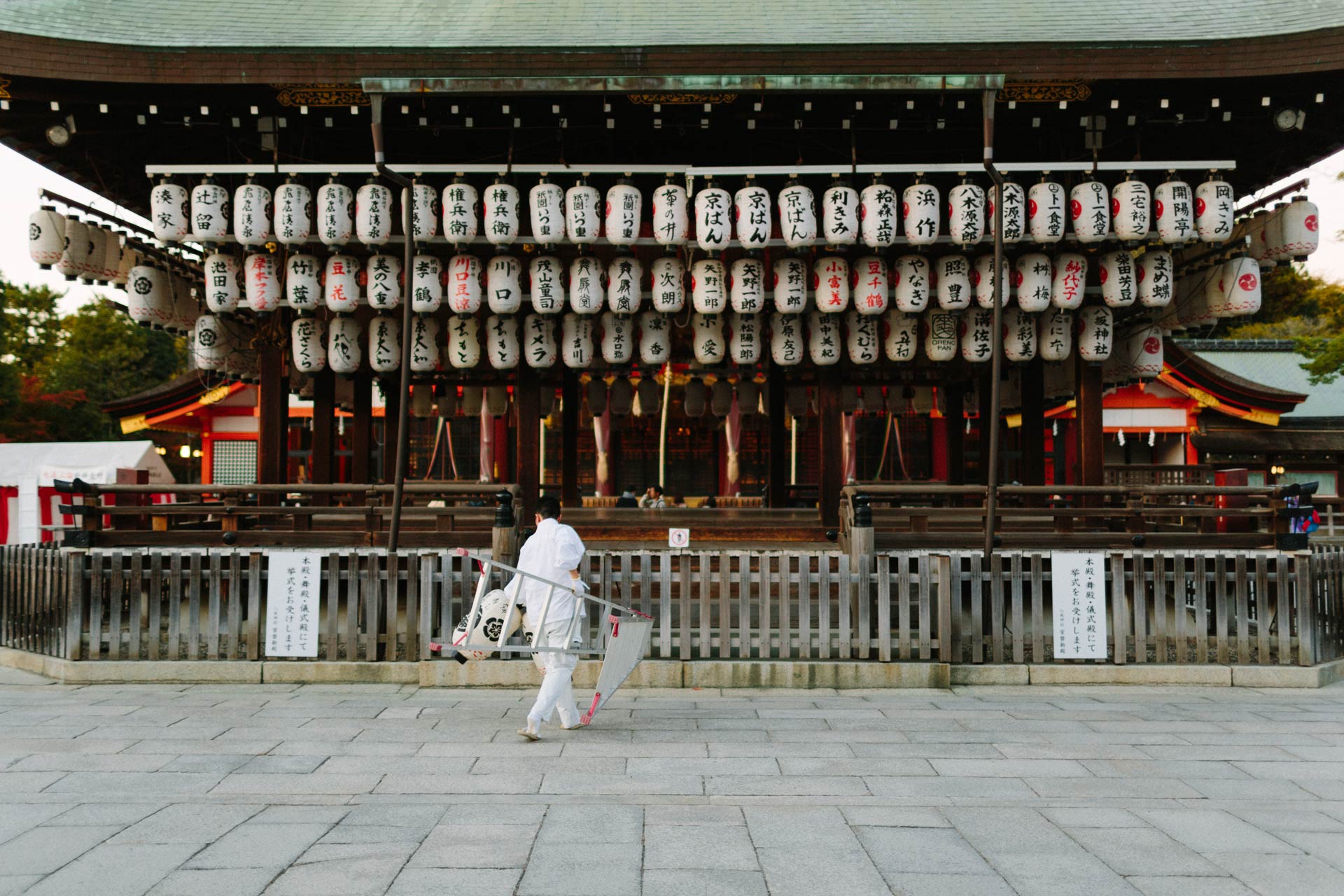
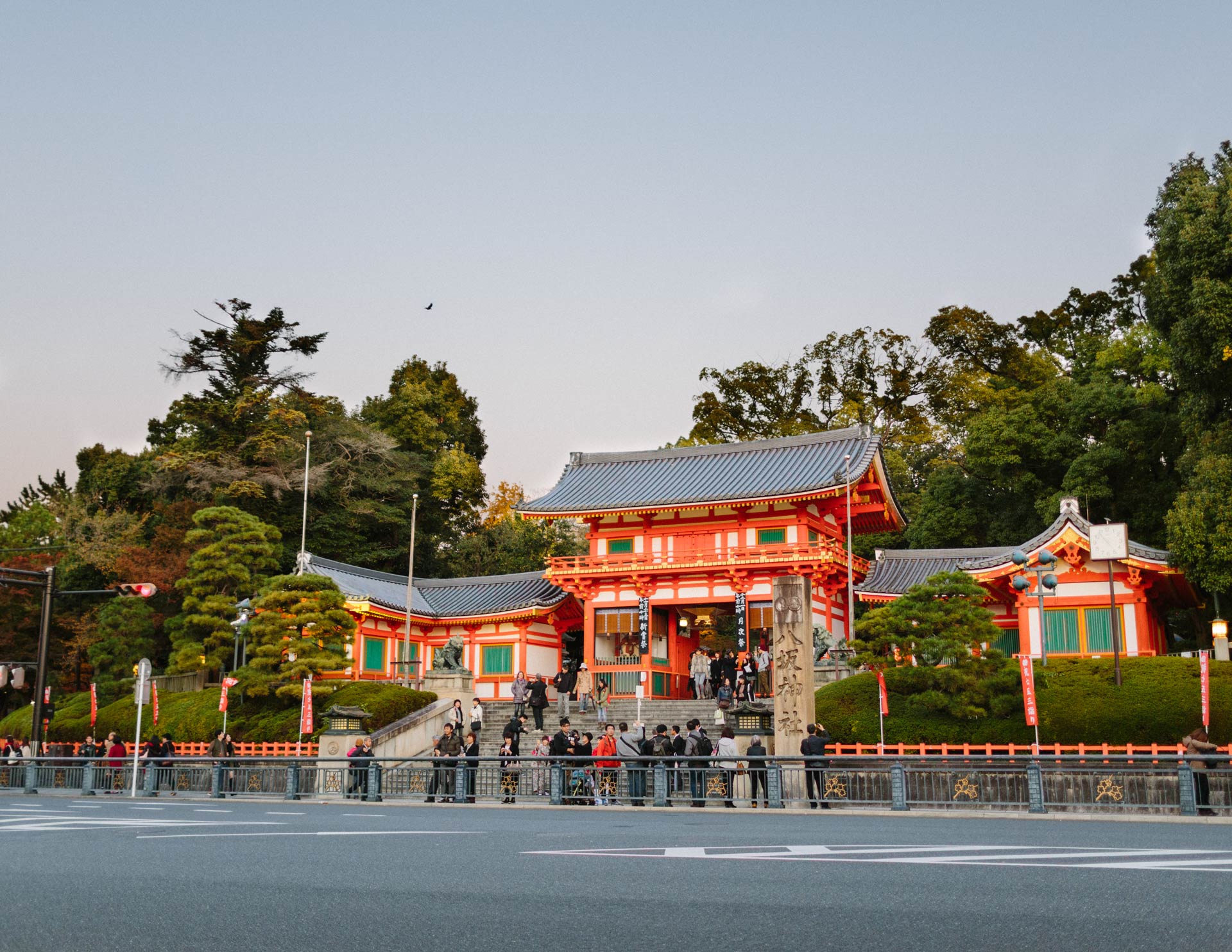
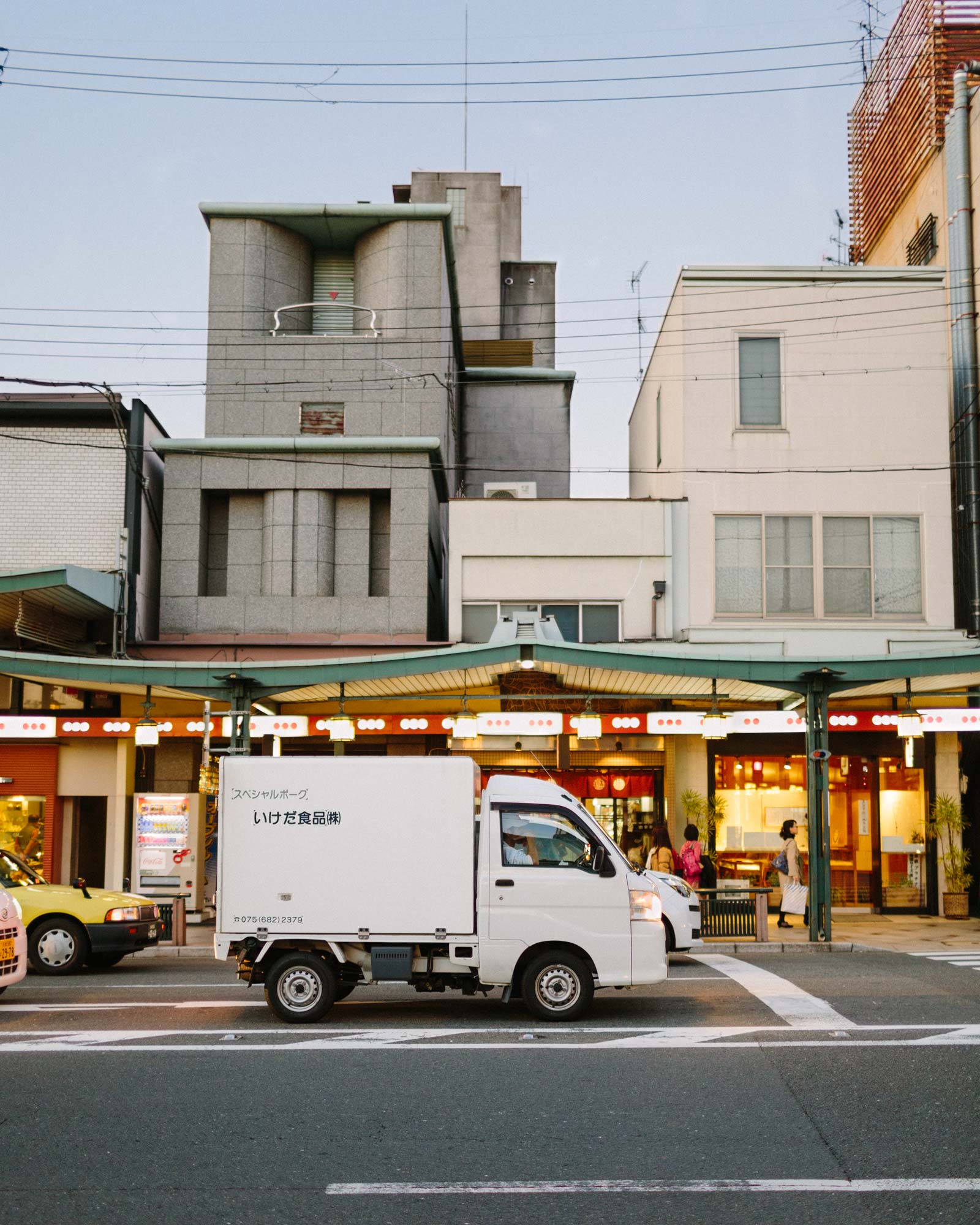
The next day was one of our favourite from the entire trip. We made our way to the Arashiyama district in the outskirts of Kyoto, rented bikes, and rode around the small town the whole afternoon, eventually reaching the infamous bamboo groves.
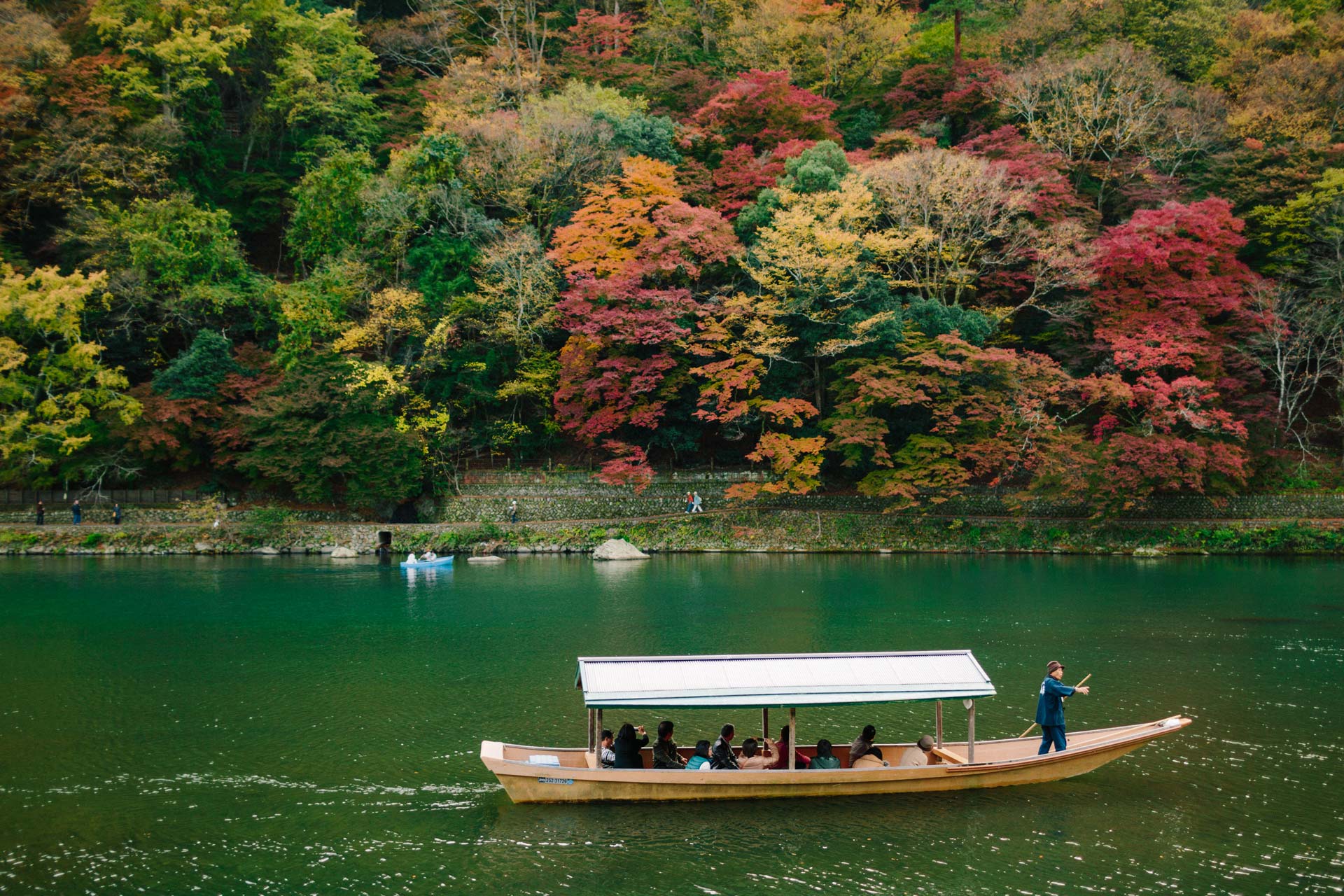
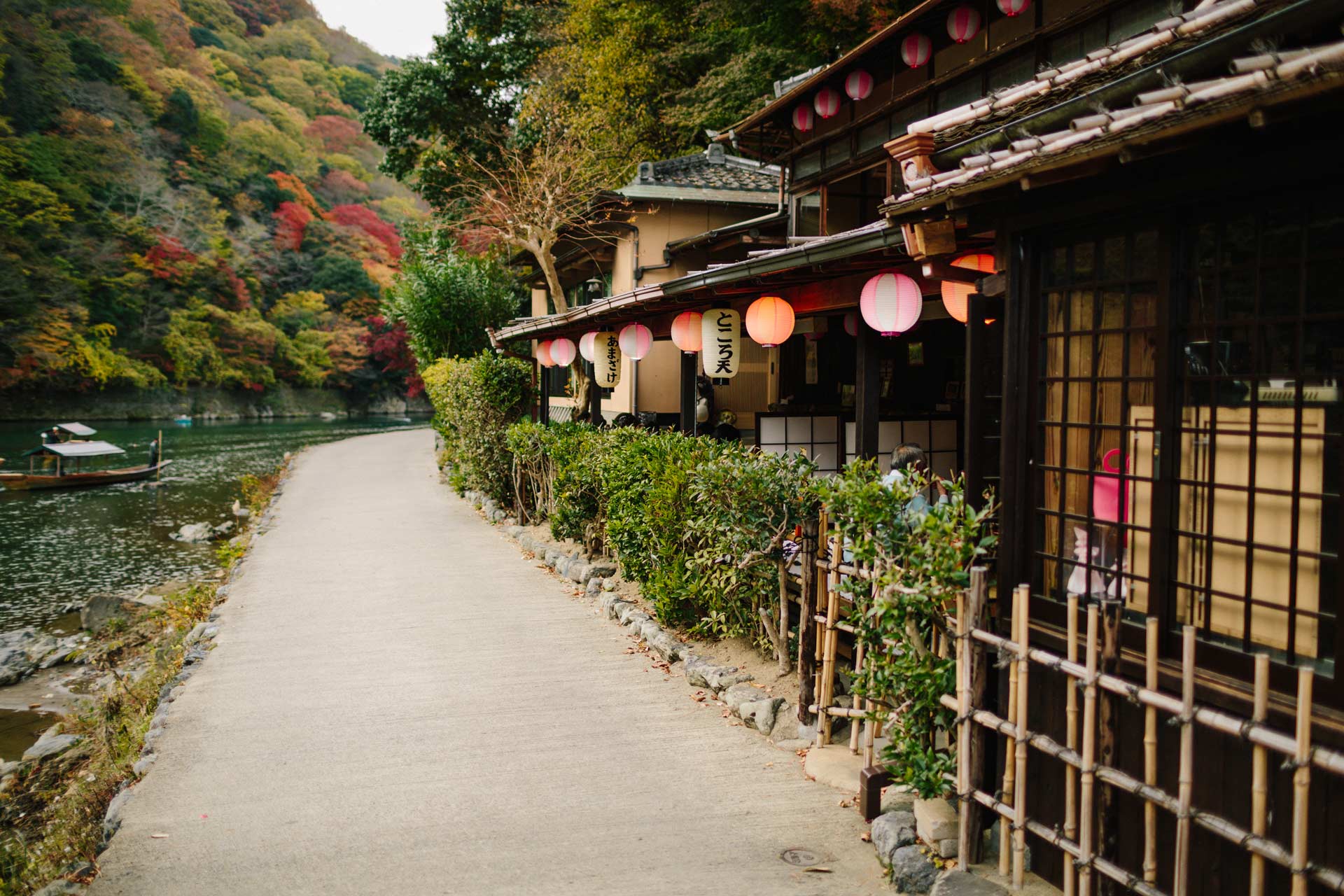
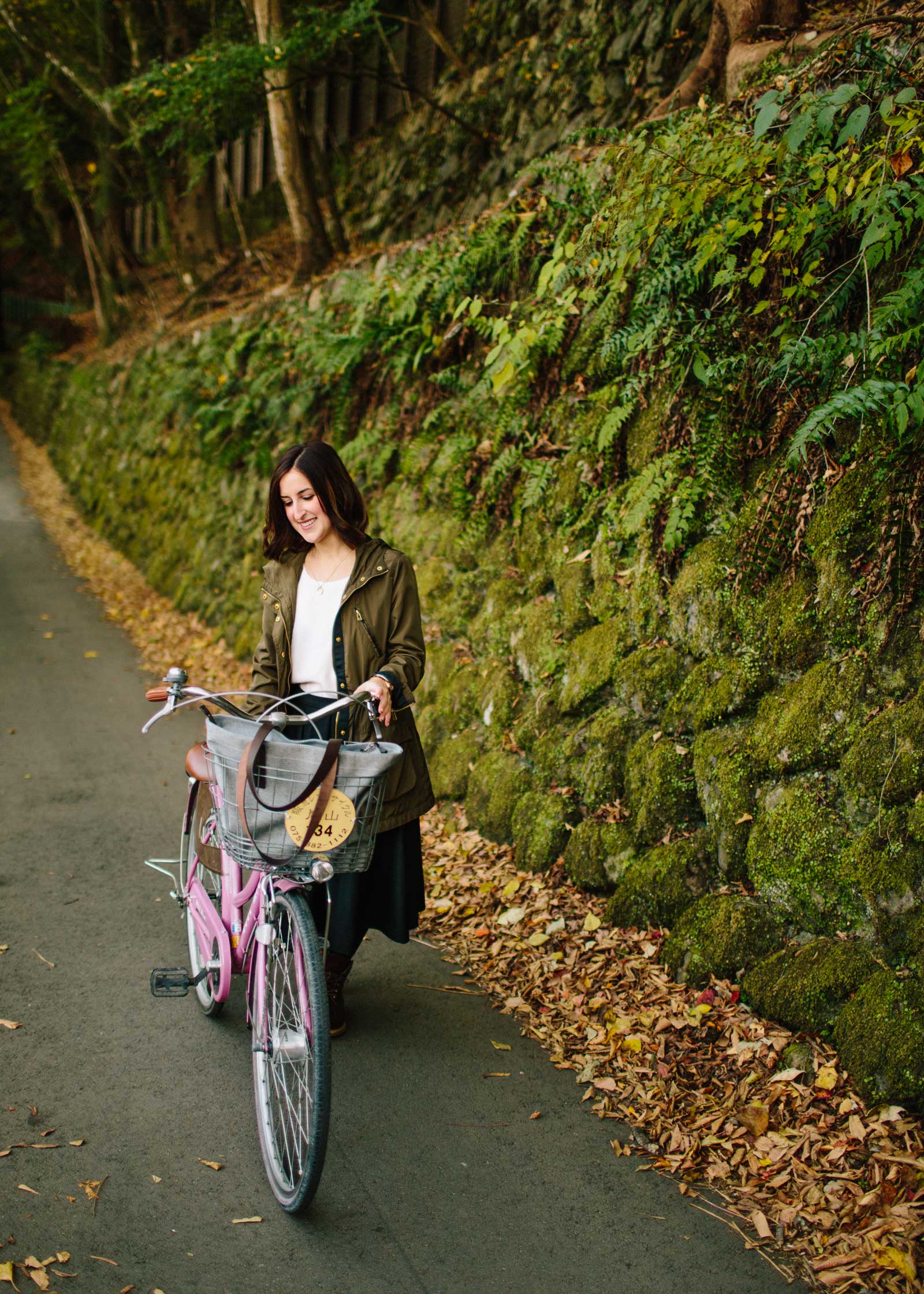
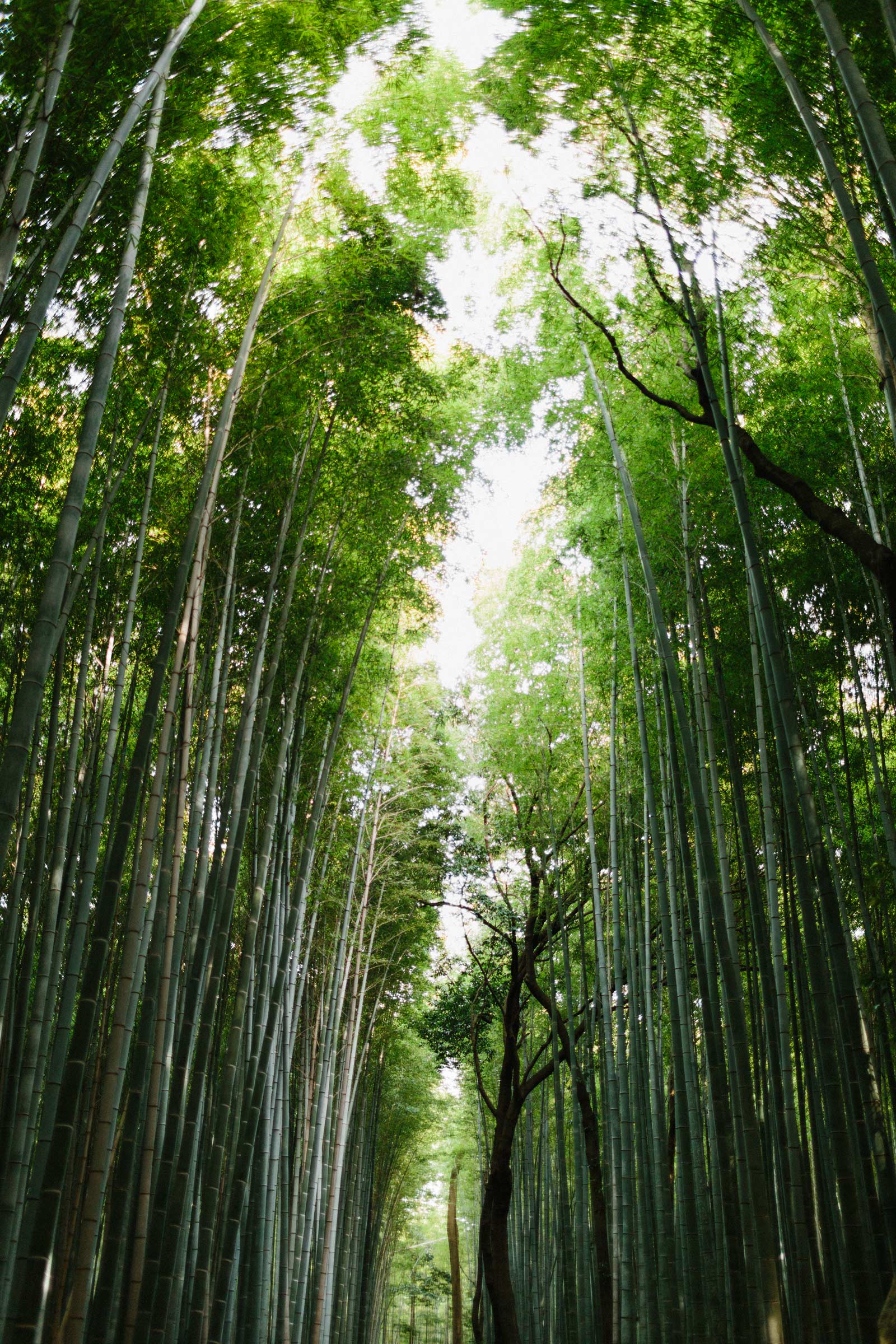
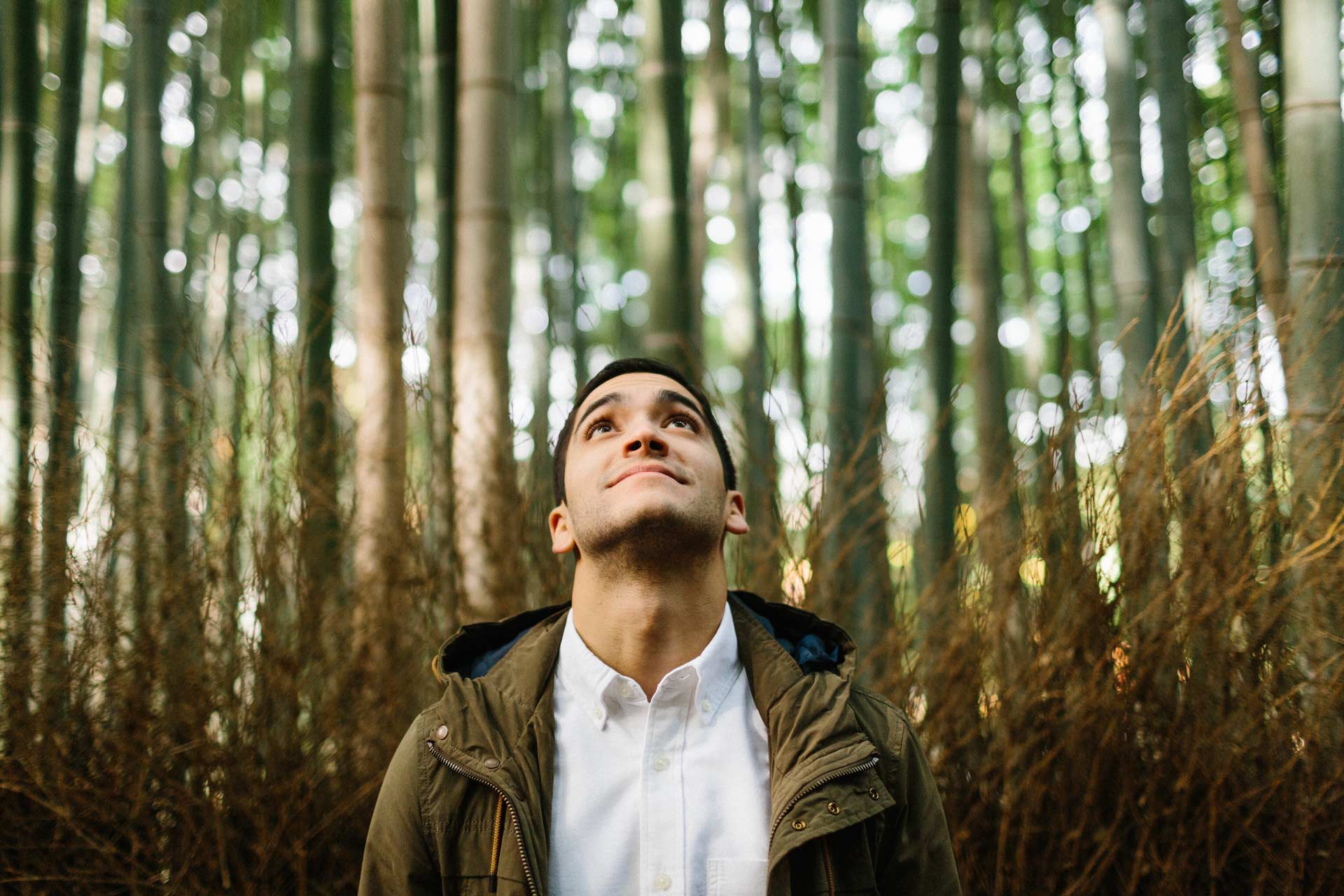
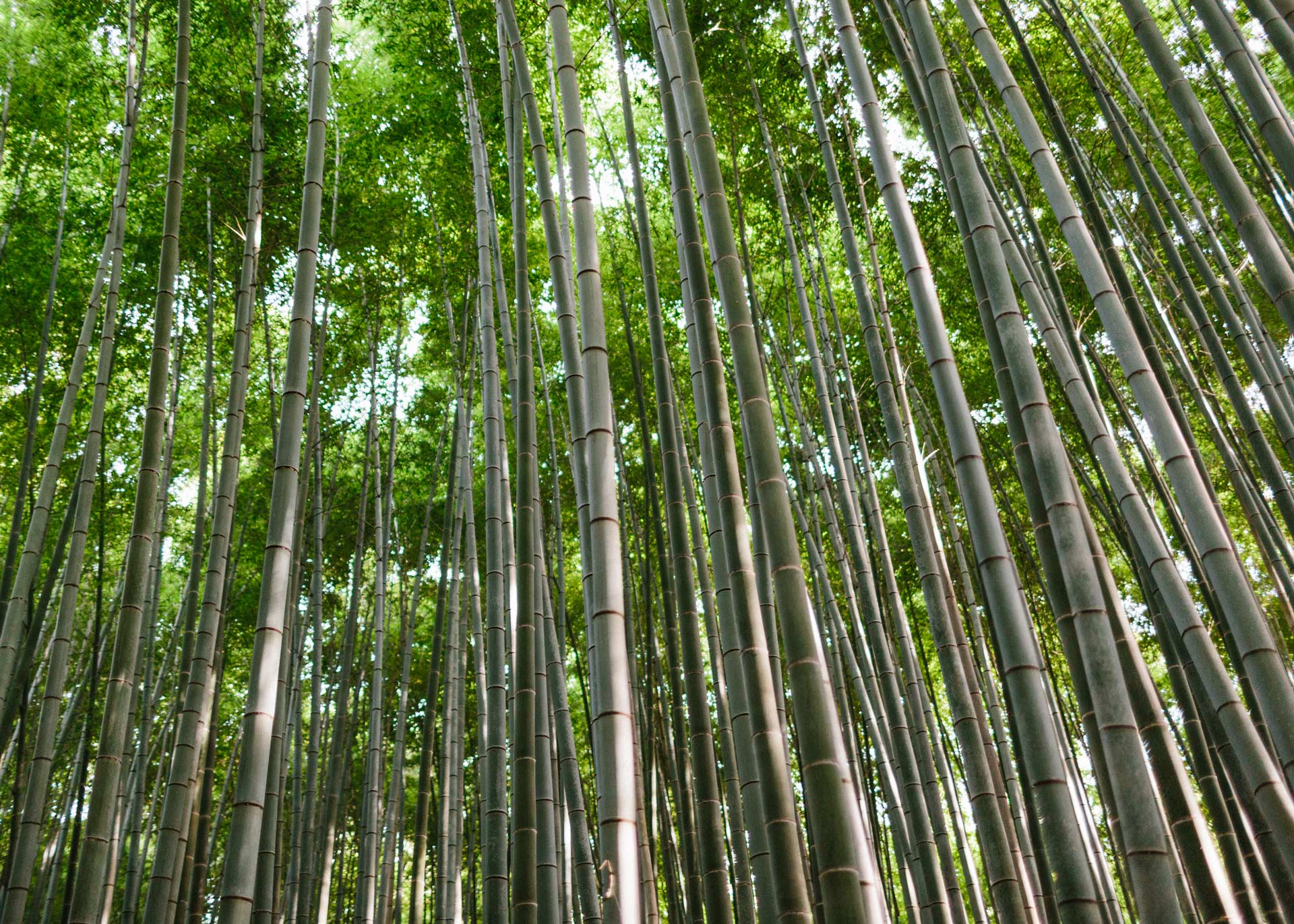
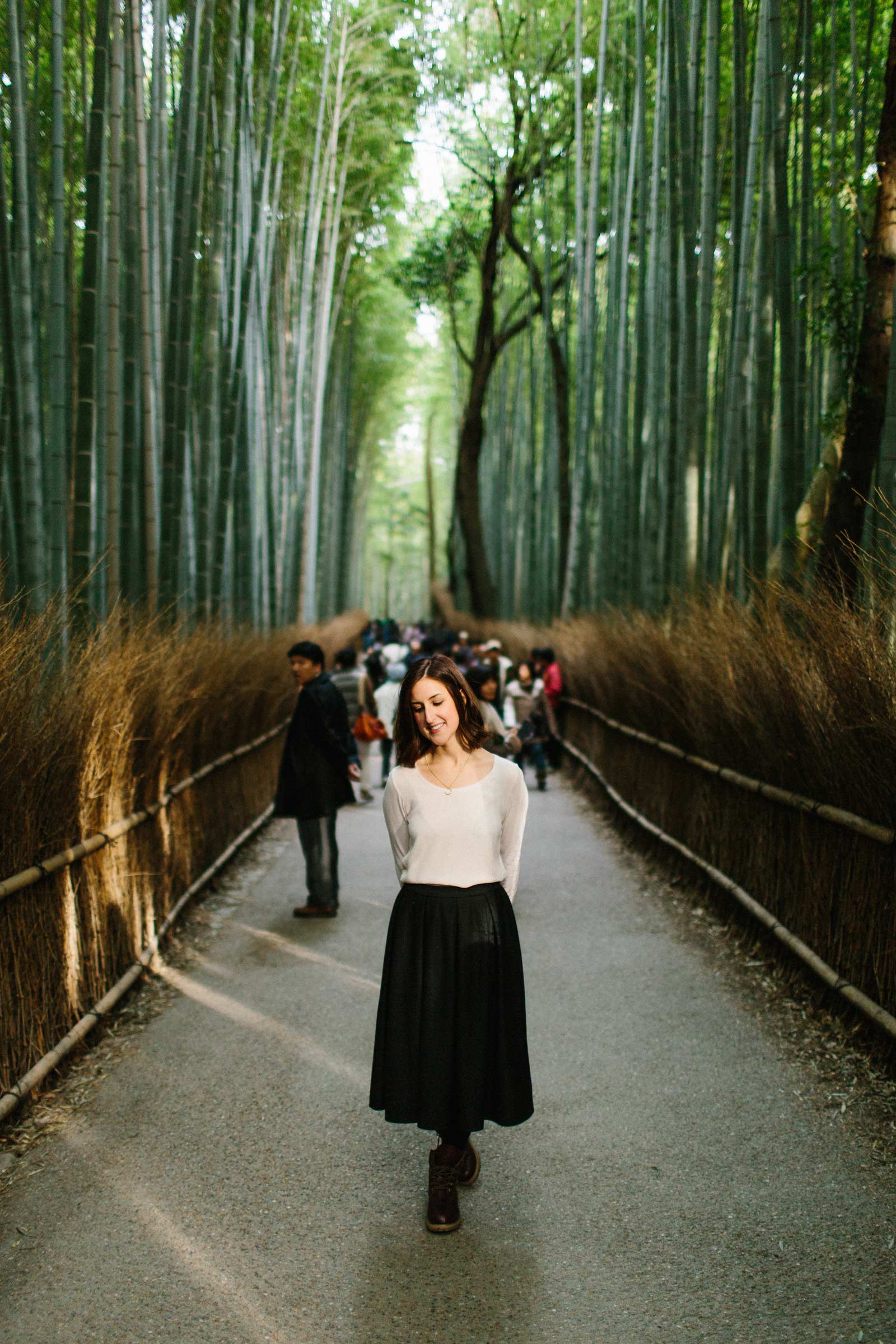
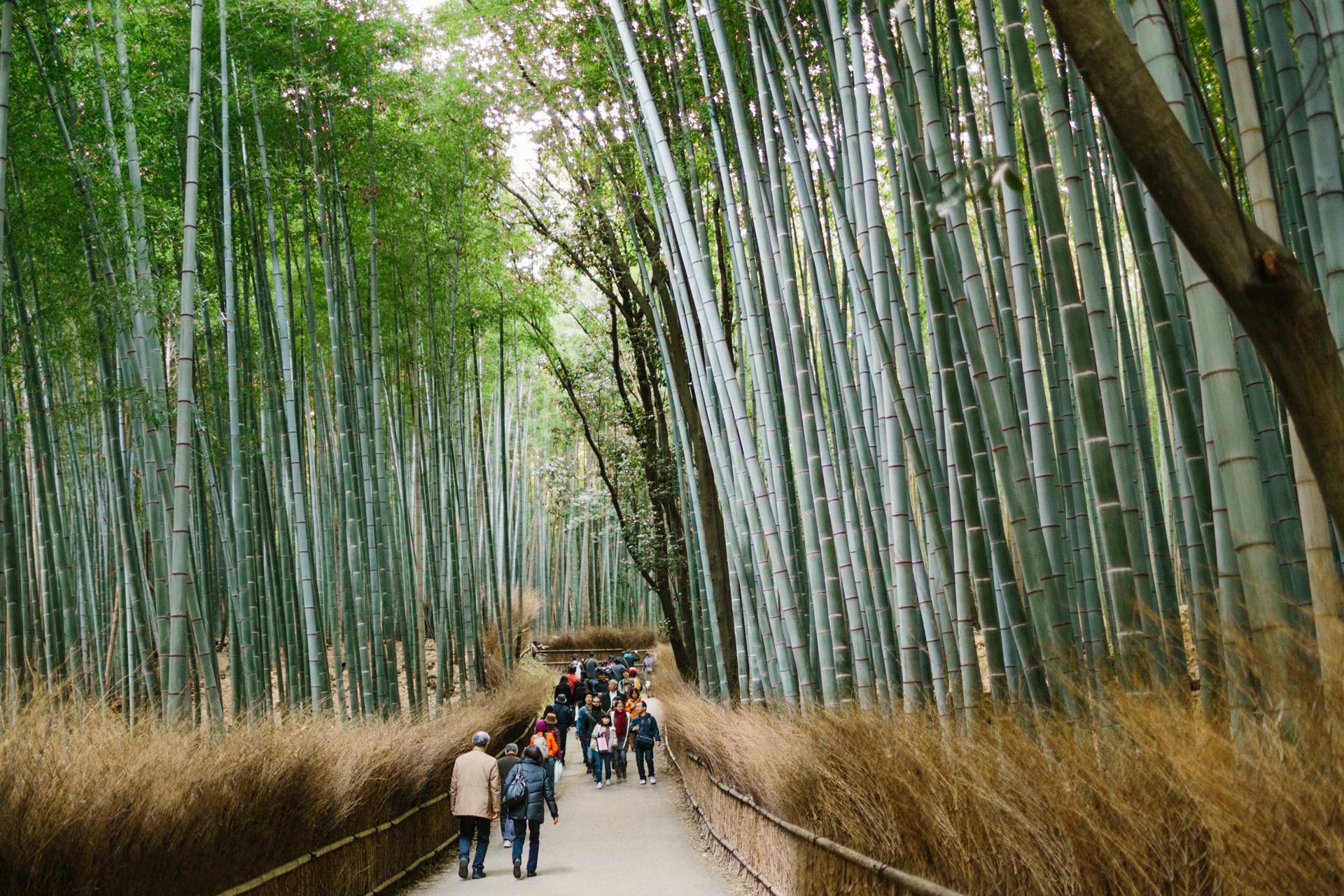
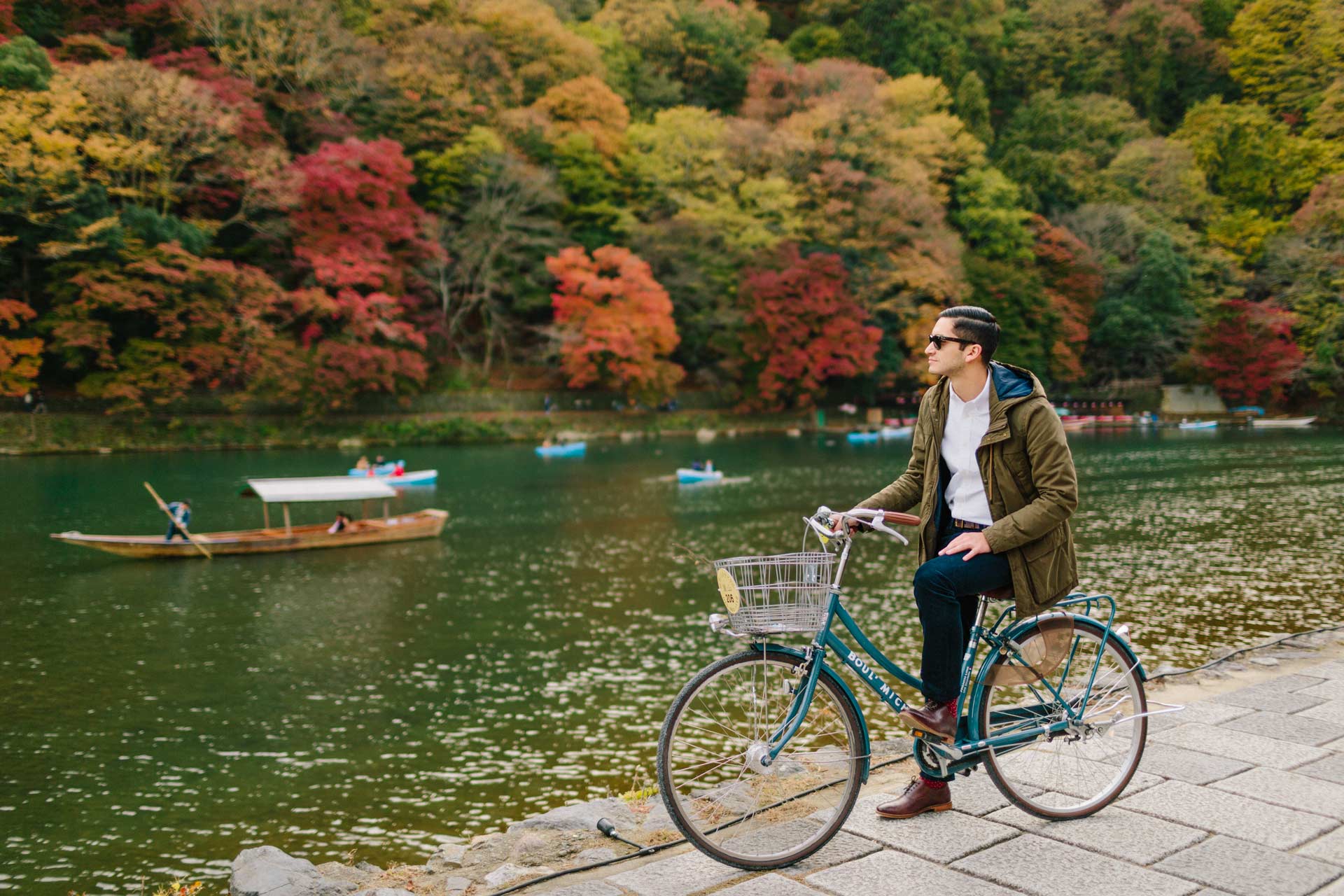
It wouldn’t be a successful day if we didn’t manage to cram as many activities as possible, so as we returned our bikes, we decided (last-minute) that we couldn’t leave Kyoto the next day without seeing the Fushimi Inari Shrine. It was already late in the afternoon and being 40 minutes away, we were risking having the sun set on us while on the train. Regardless, we took a chance and arrived with just 15 minutes of sunset left to take some photos inside the tunnels comprised of hundreds of torii gates.
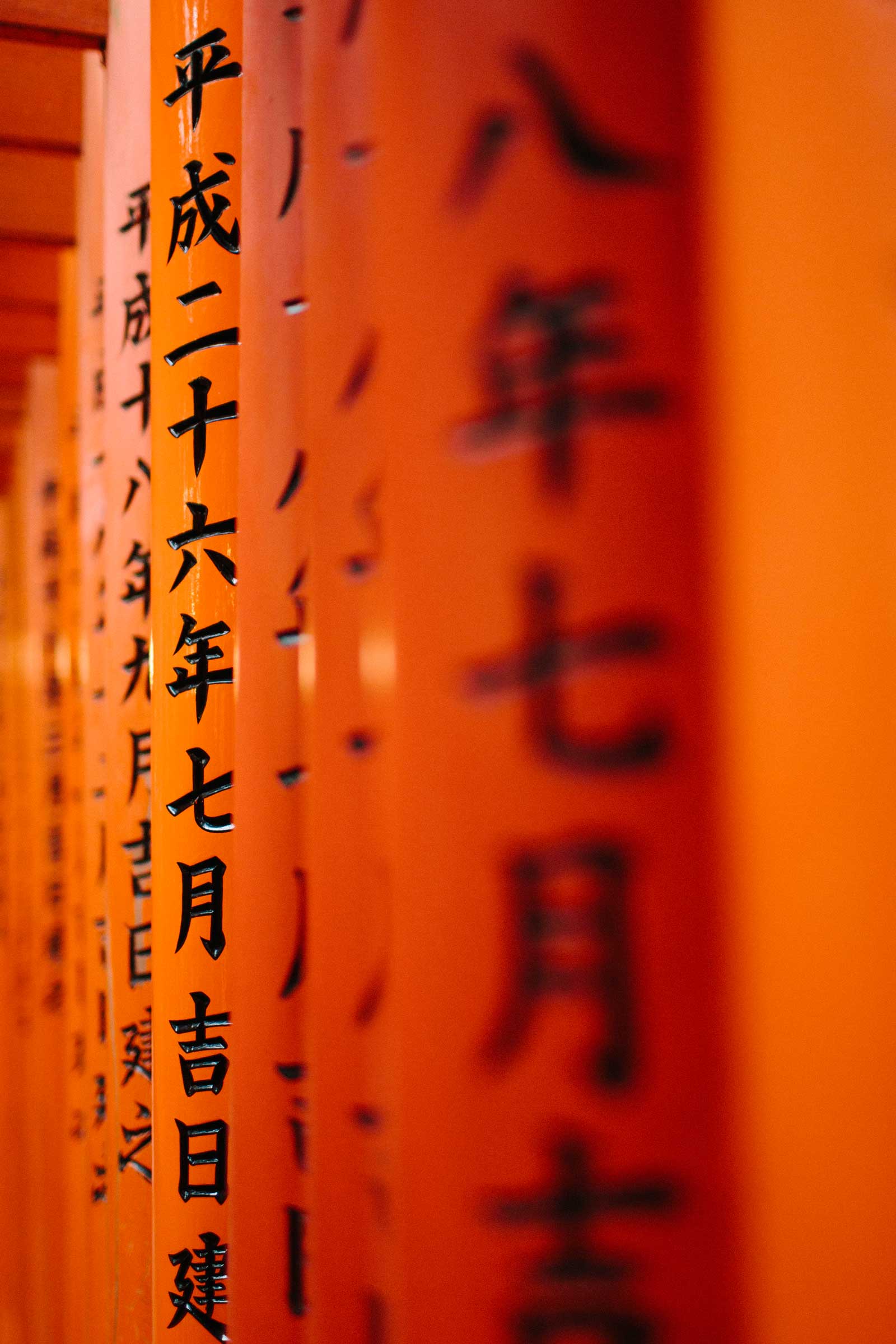
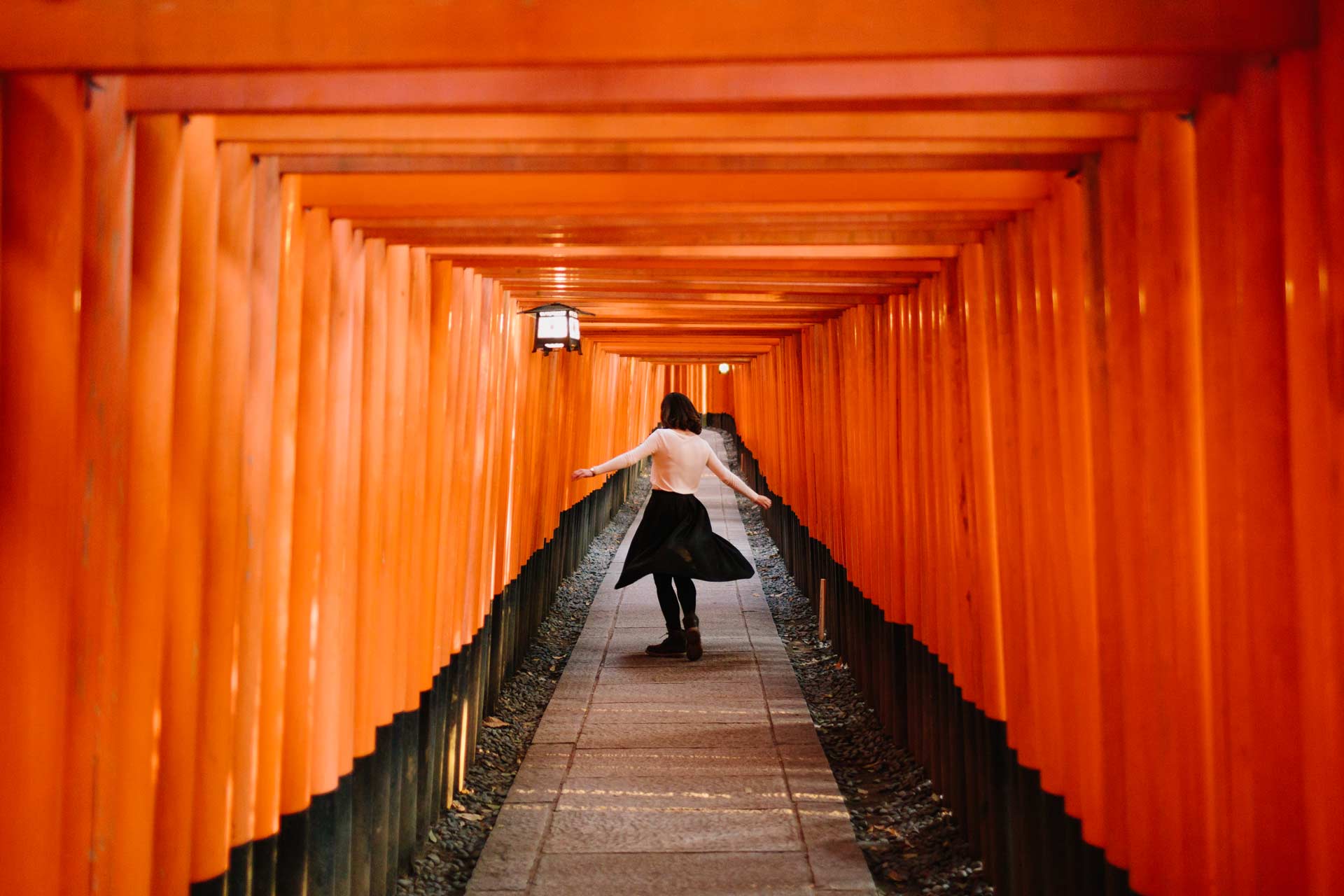
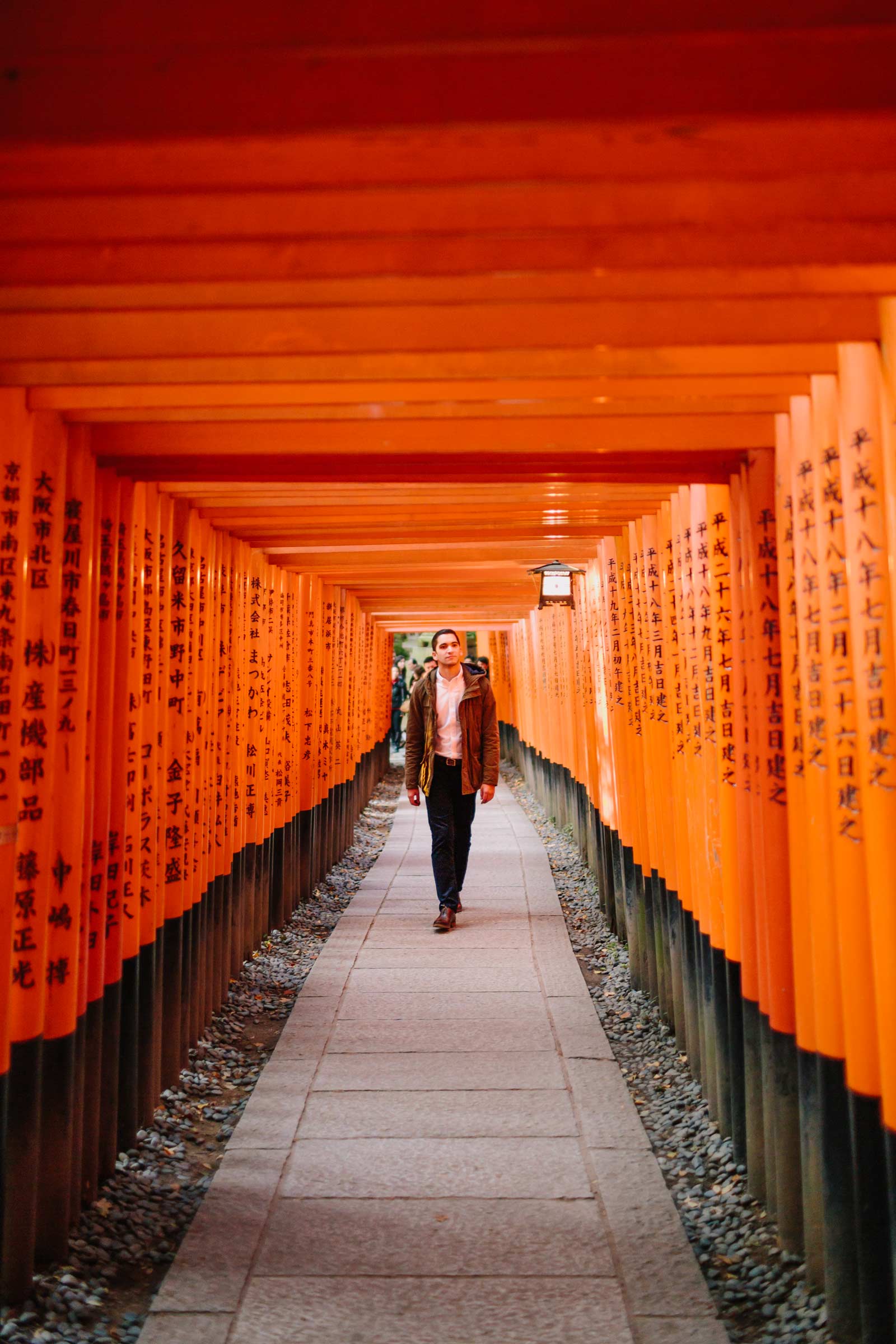
We rewarded ourselves with green tea ice cream and amazing coffee.
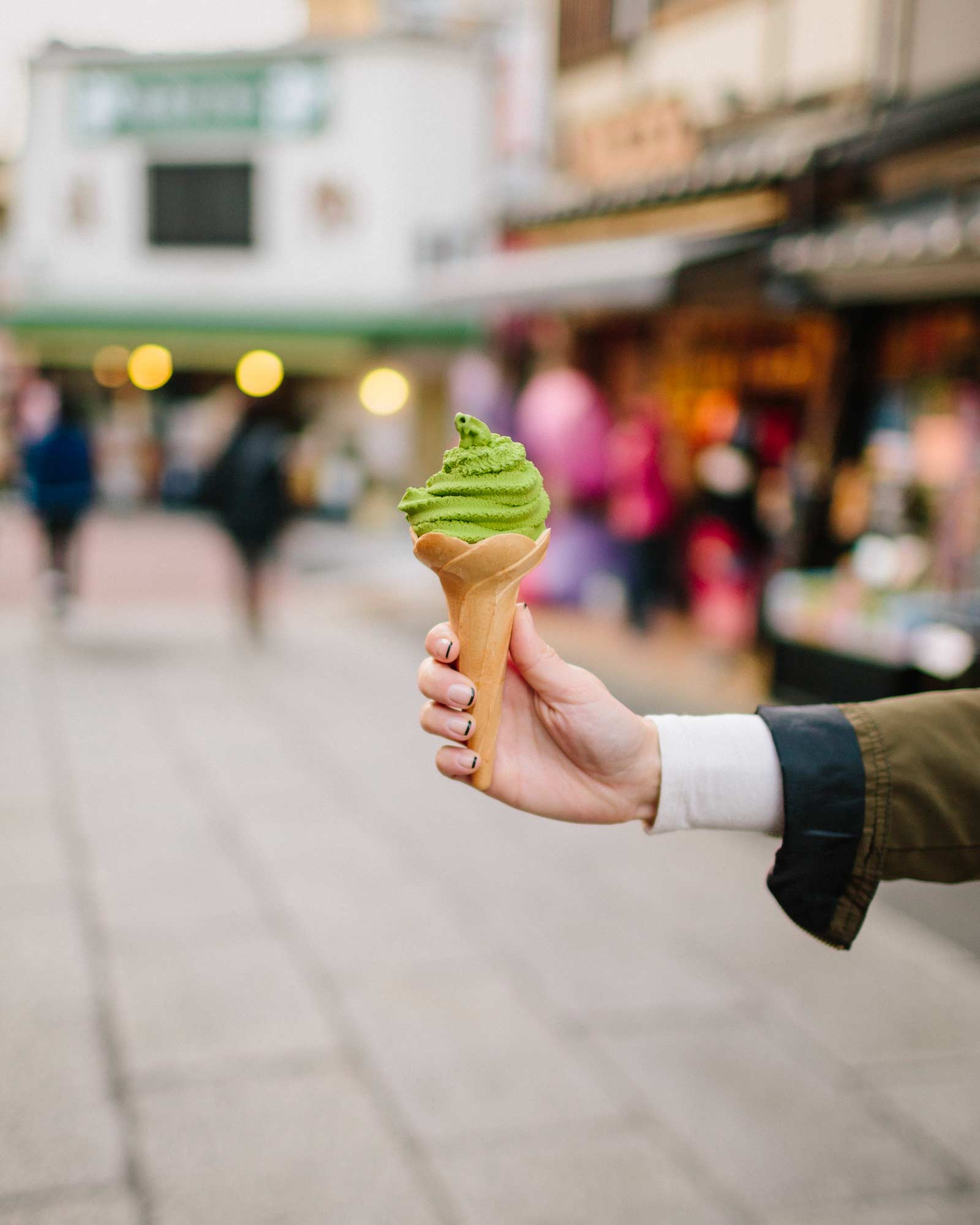
The following day we left for Osaka. Being just an hour away from Kyoto, we should have had time to make the most of our one and only day there, but we may have partied a little too hard the night before and instead found ourselves zombie-ing our way through the trains, just making it to our hotel before sleeping the afternoon away. It’s a sad tale of caution: when your friendly waiter at Sumibi Torito keeps bringing you drinks, you should stop while you can still count them.
Either way, we rose just as the sun was setting and went on to have an amazing night in Osaka.
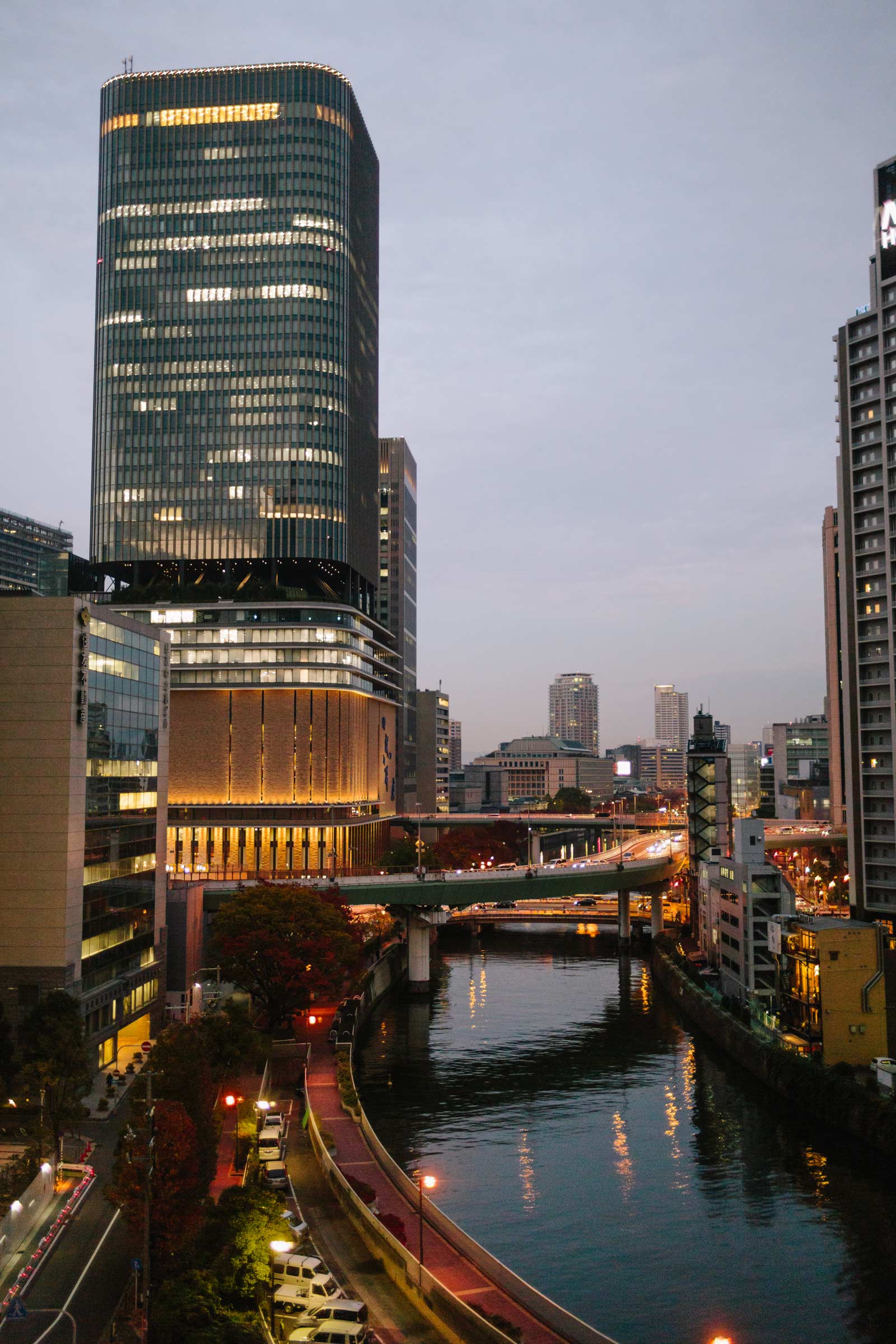
Our first stop was a much-needed coffee at graf. Beyond being a perfect little coffee shop, graf is mainly a design studio specializing in furniture. Look to the other end of the space and you’ll likely see the group sketching away at new designs. The atmosphere here is unmatched.
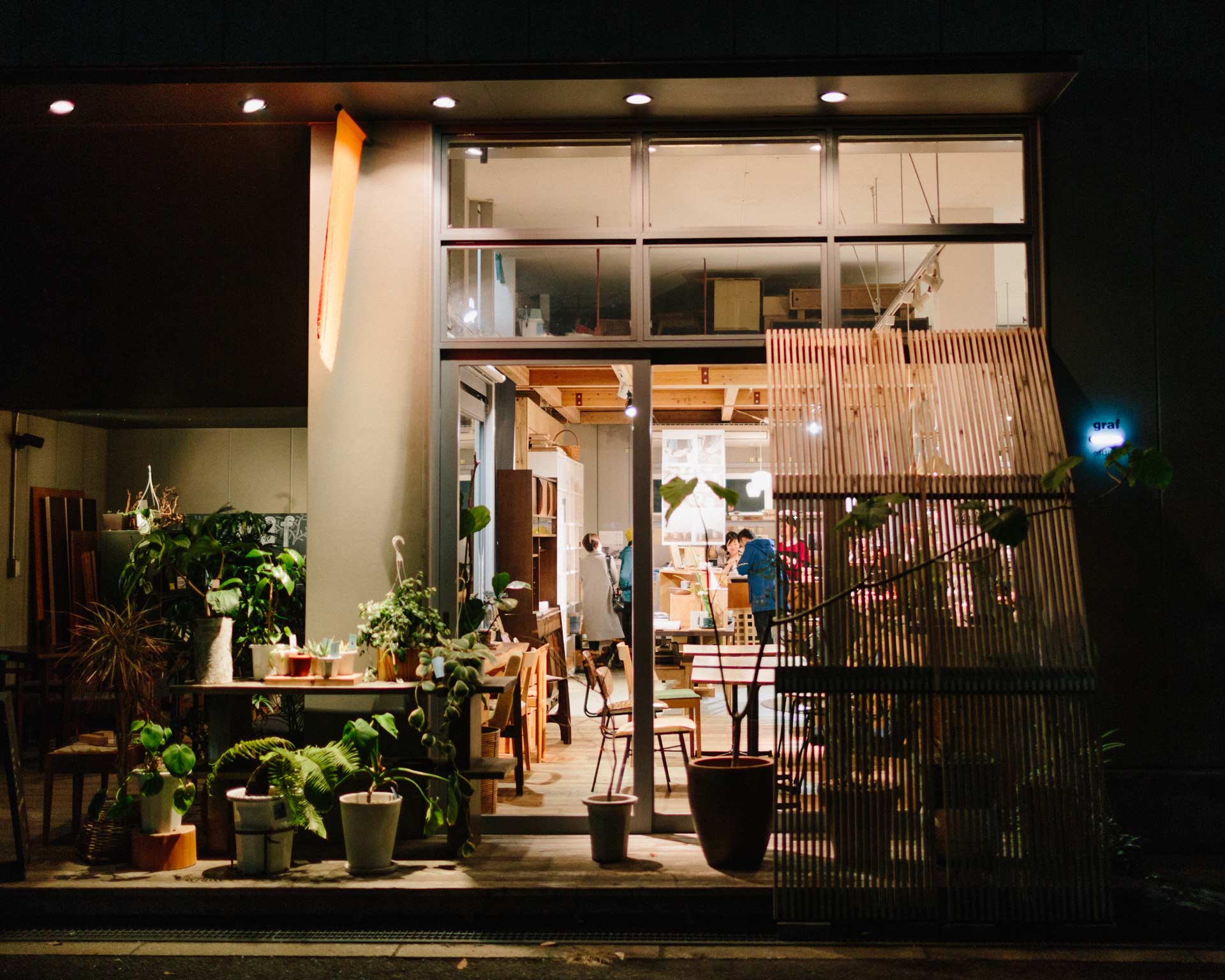
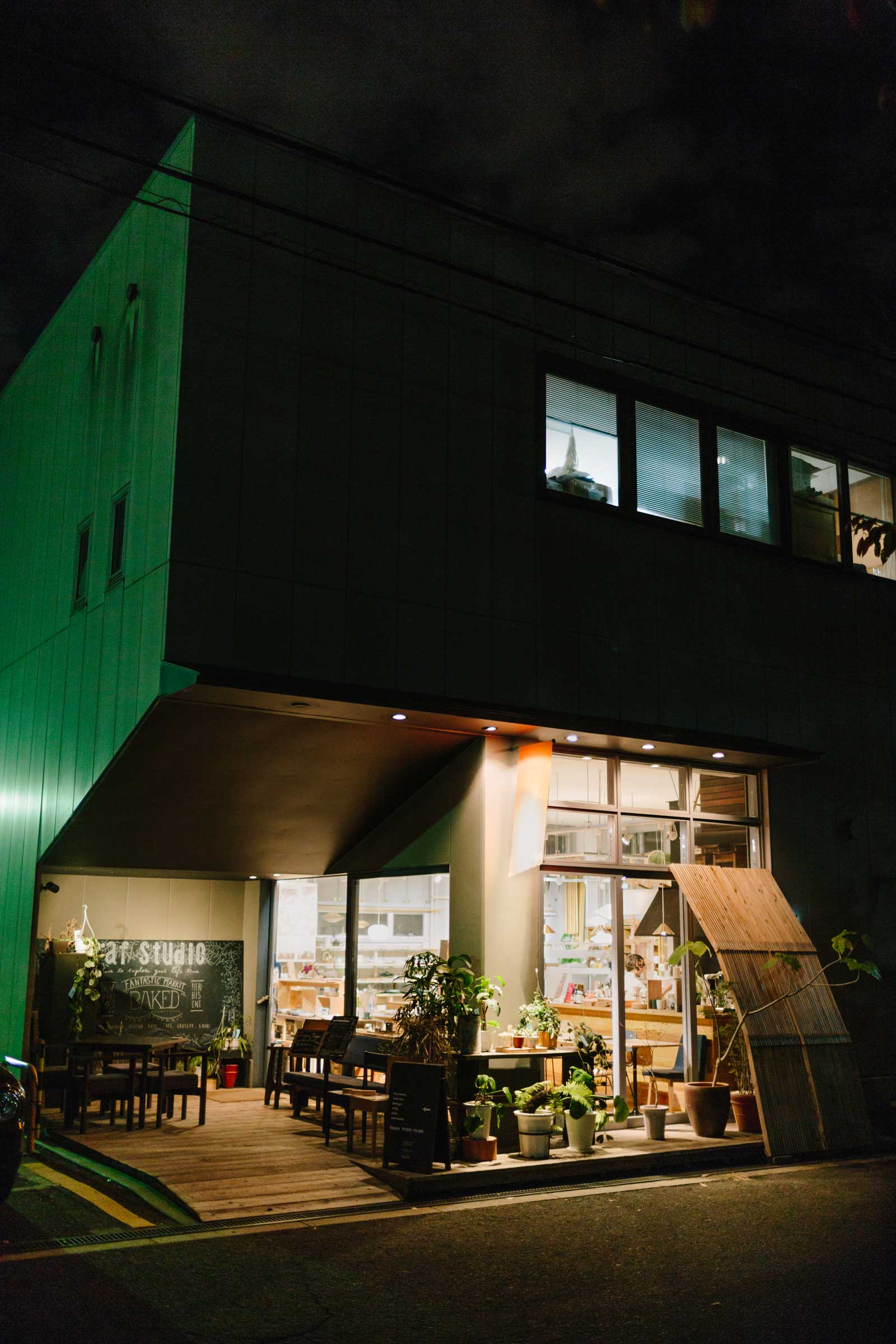
From there, we took a cab over to Namba Parks — the most elaborate mall we’ve ever set foot in — for a quick dinner before strolling through the packed streets of Osaka and ending the night at the Glico Man sign. Well, technically it ended with some unexpected yet very welcome crepes on the walk back.
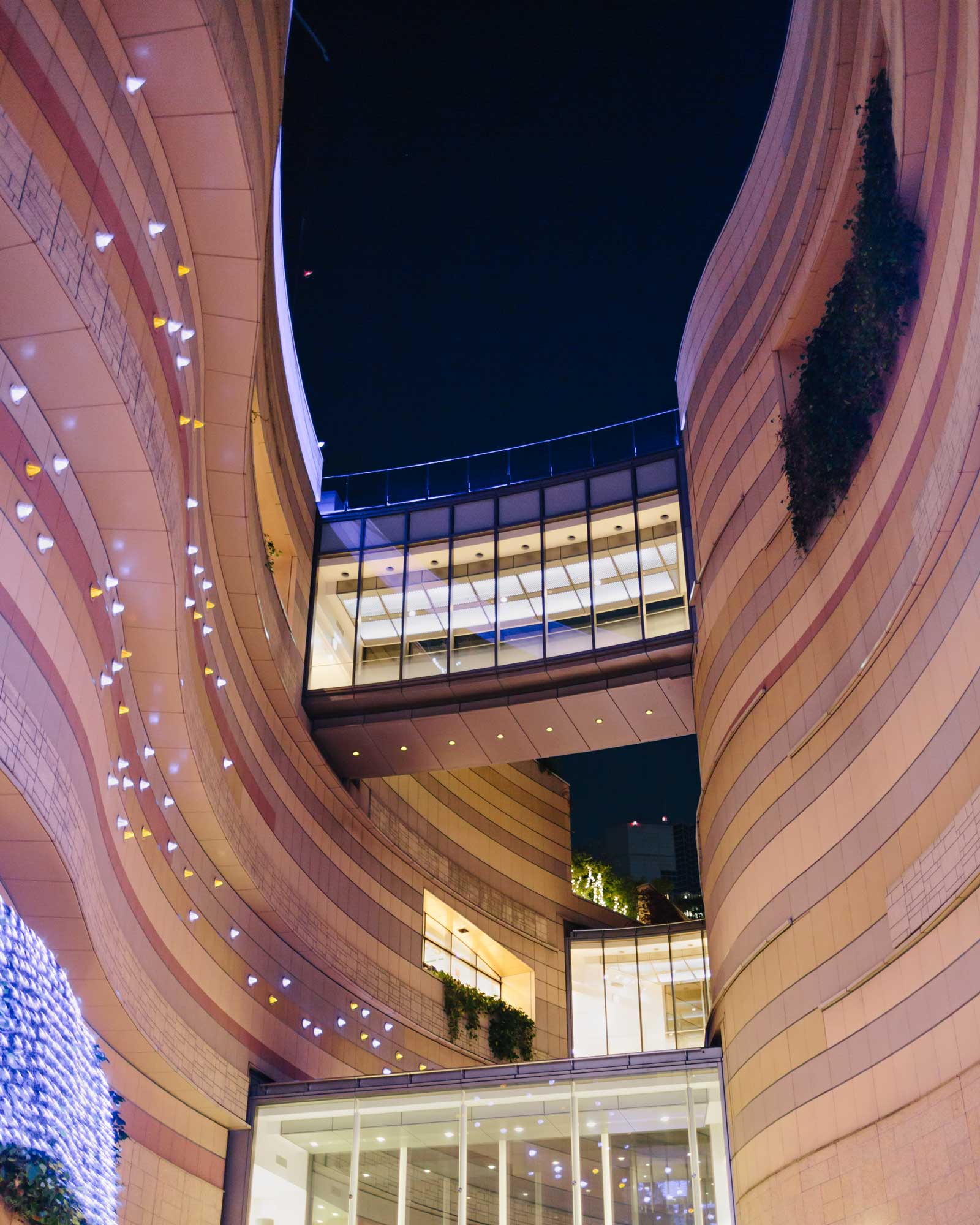
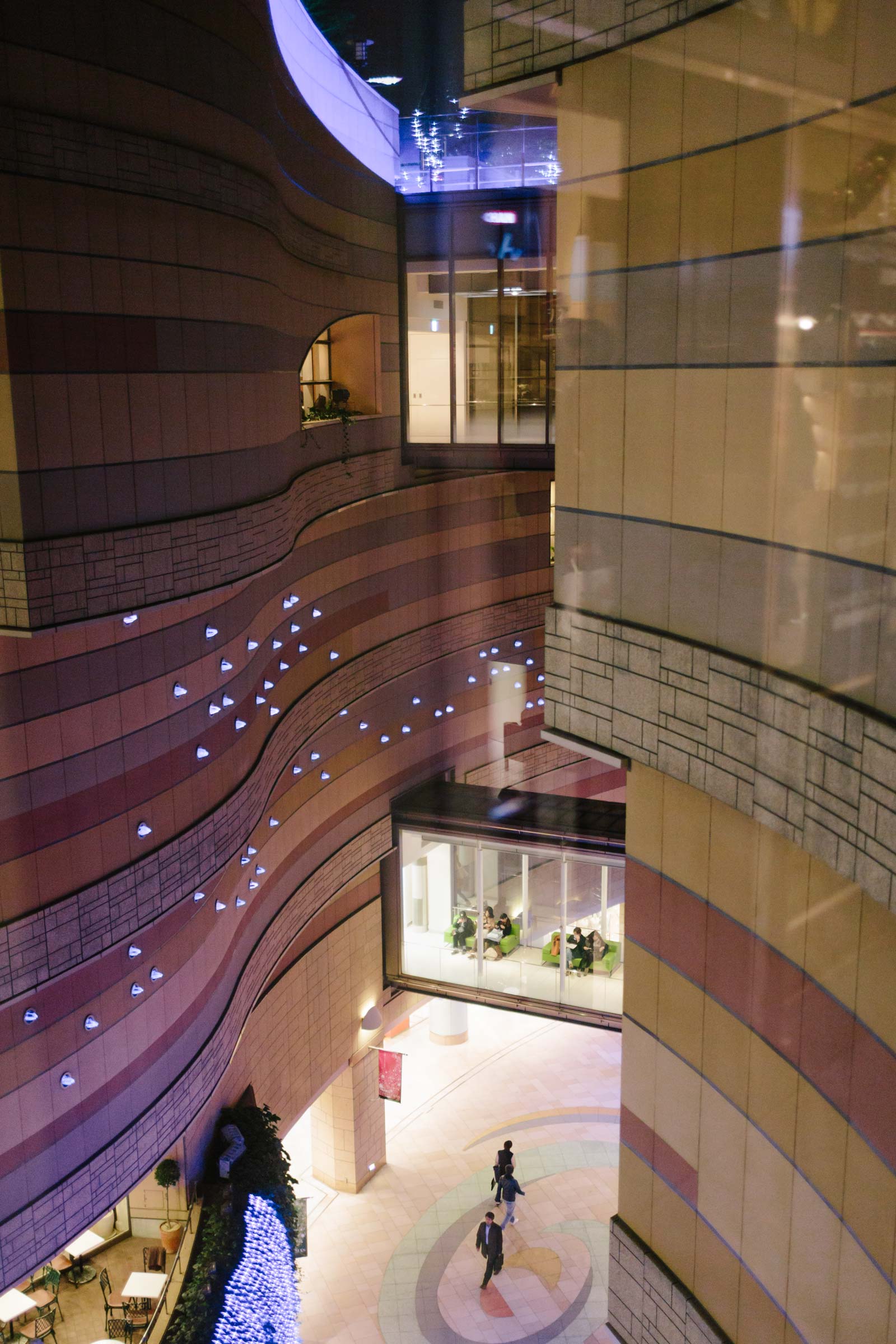
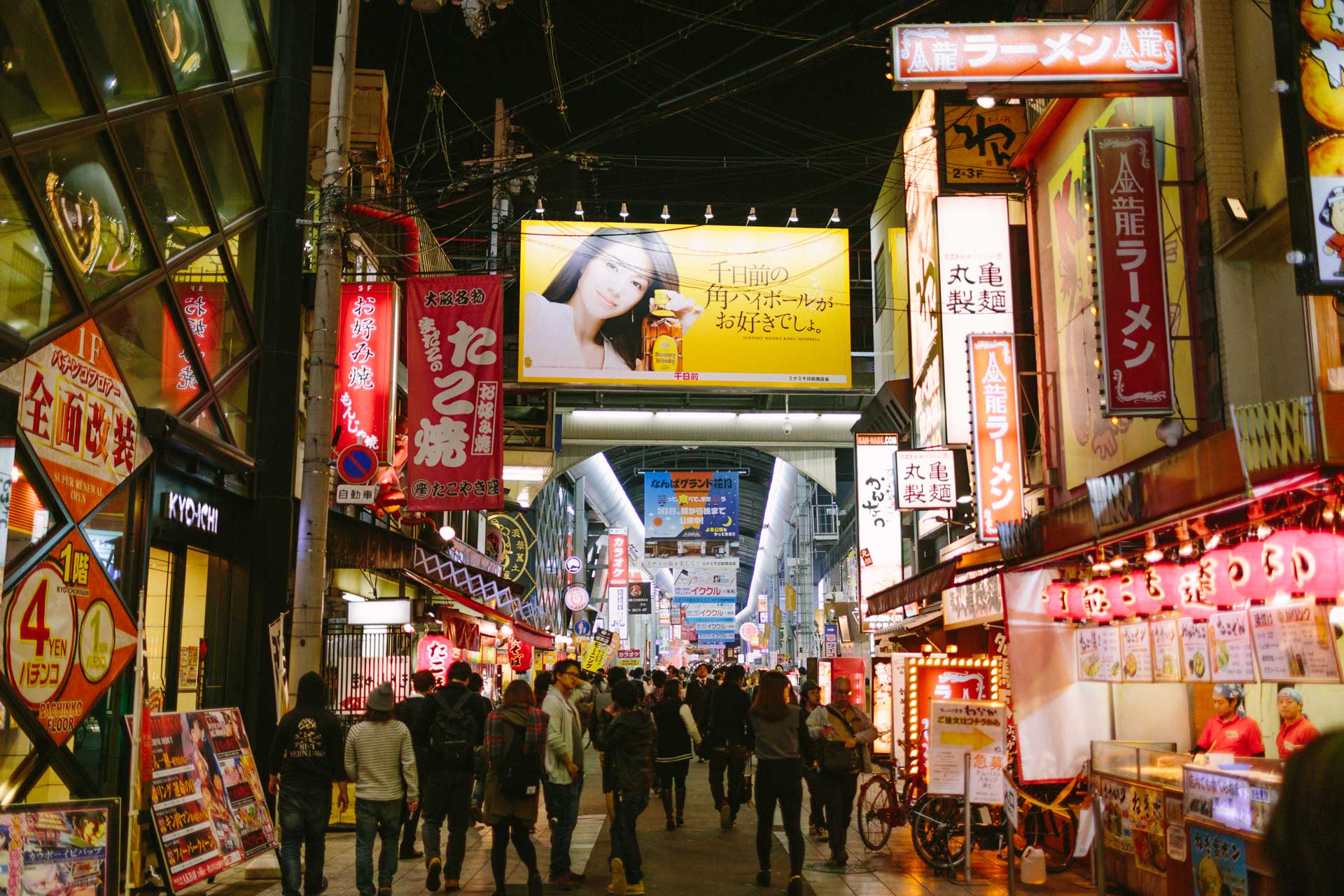
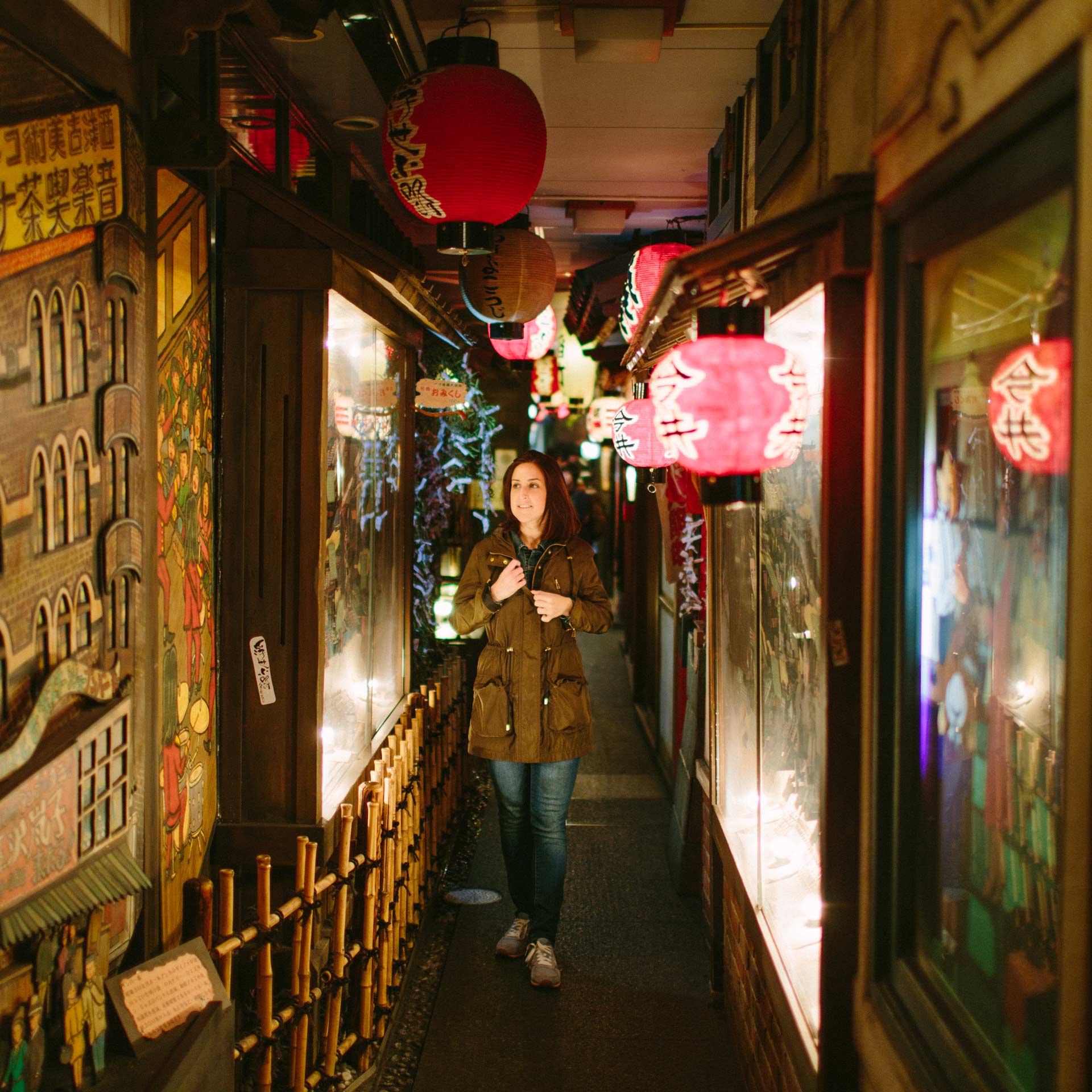
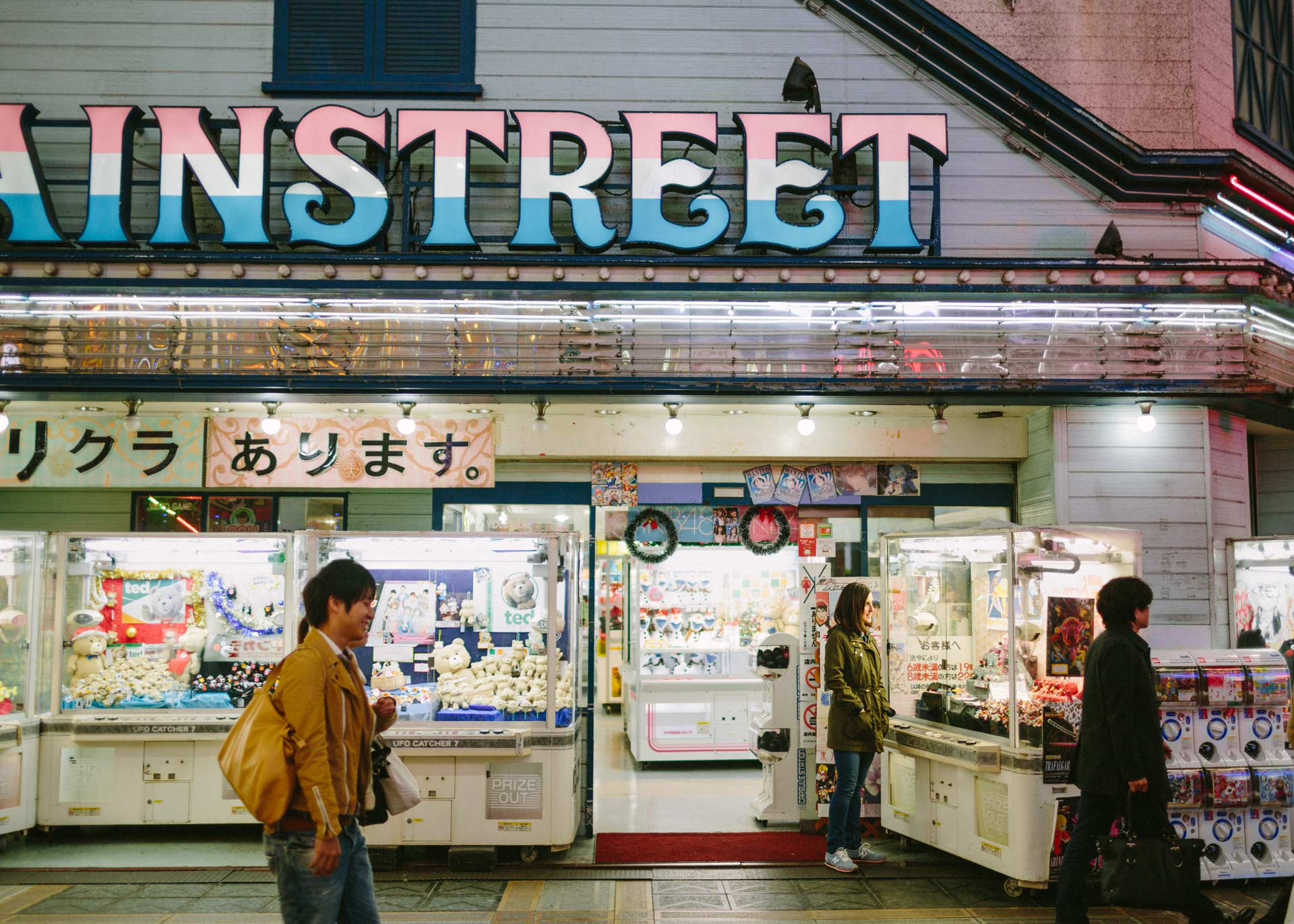
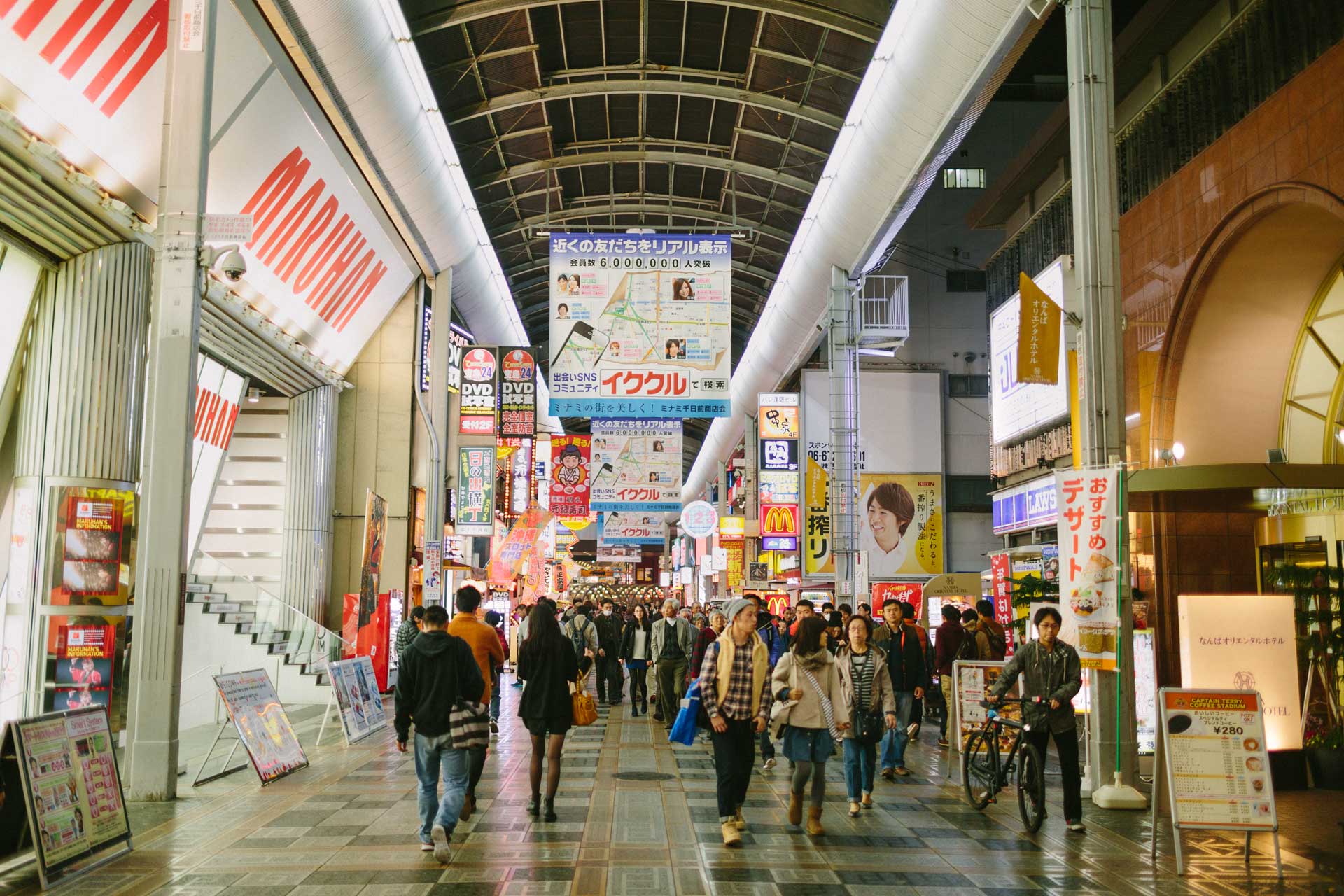
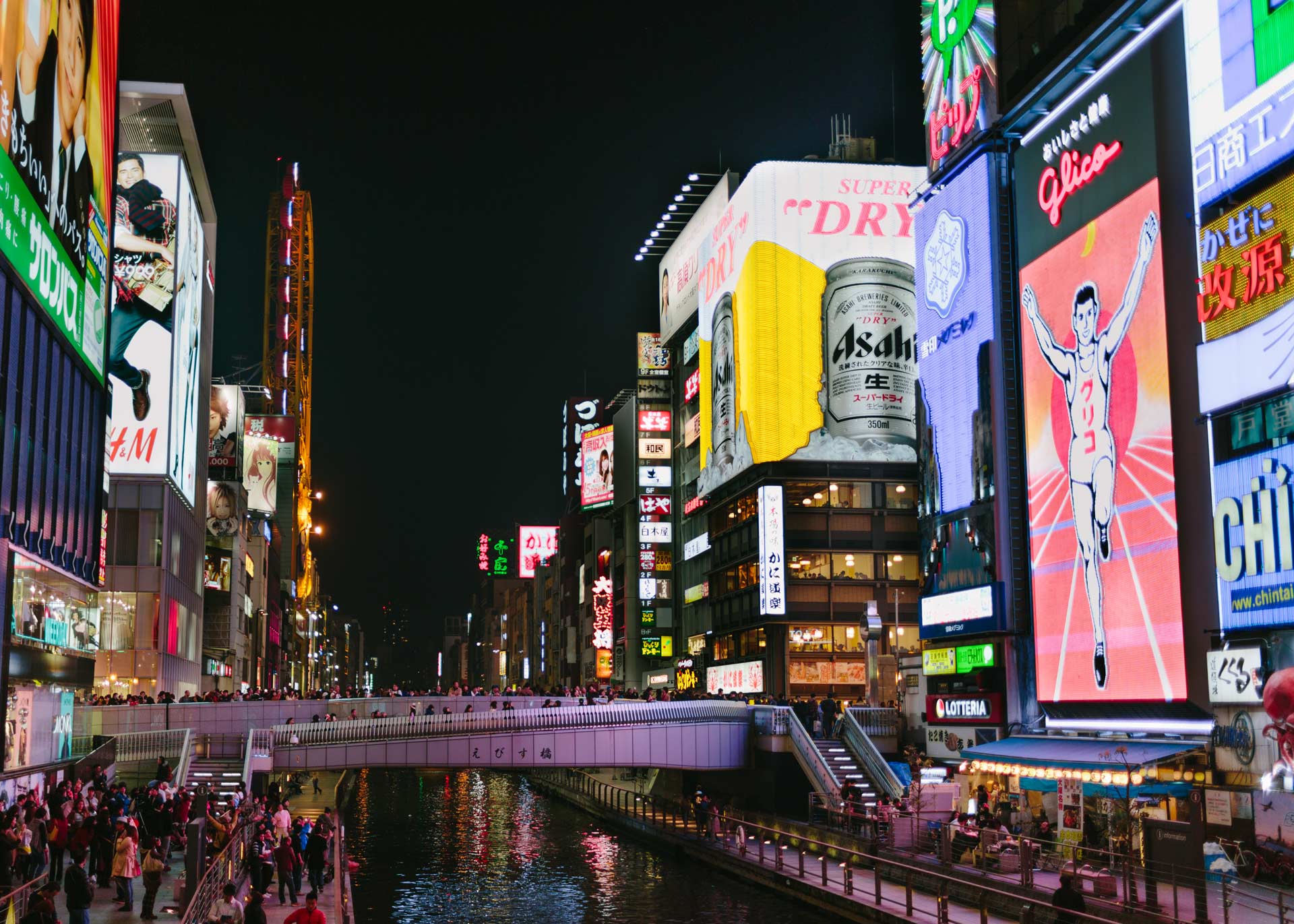
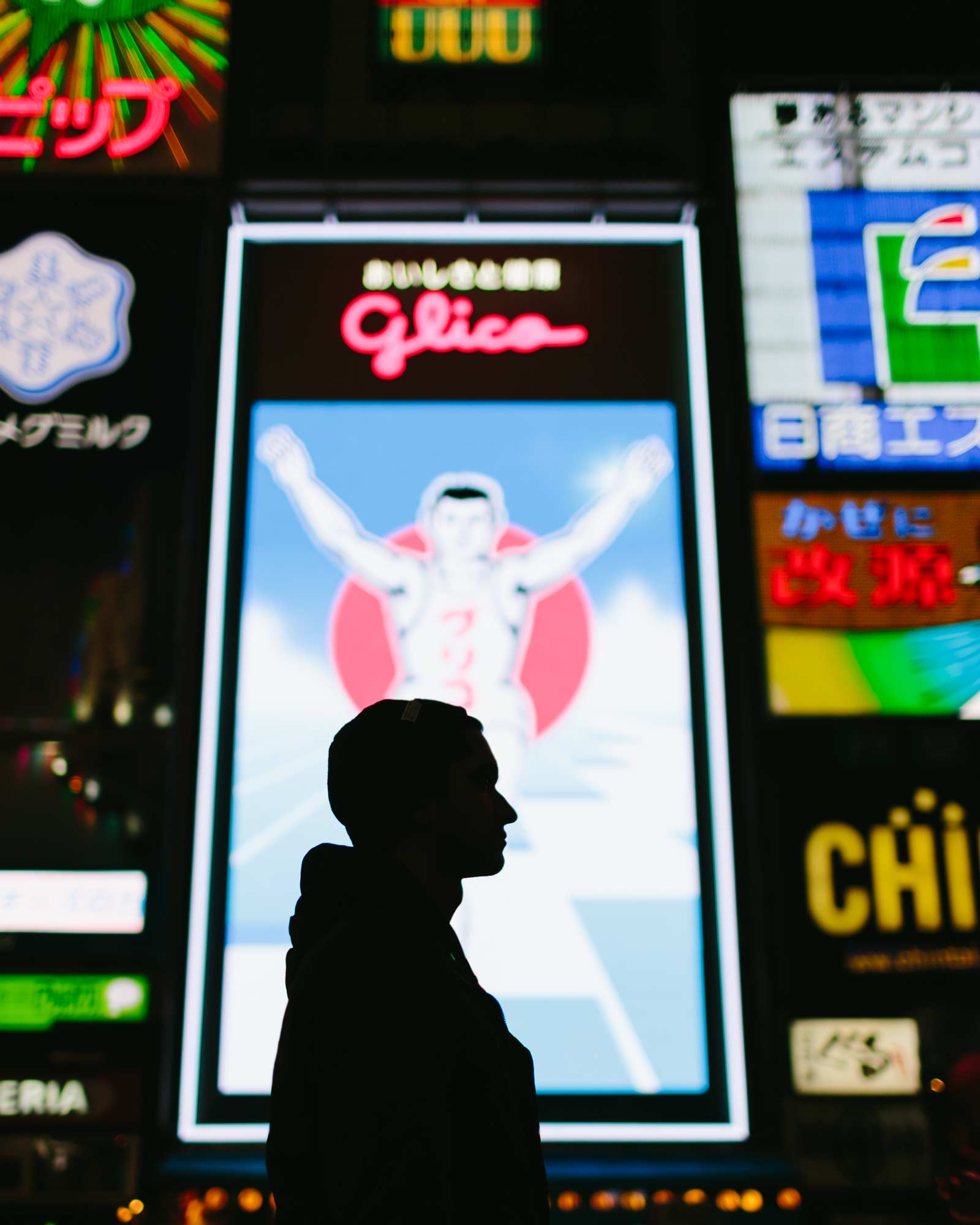
The following morning we walked over to graf for more coffee and yet another round of crepes before our 3‑hour bullet train to Fukuoka.
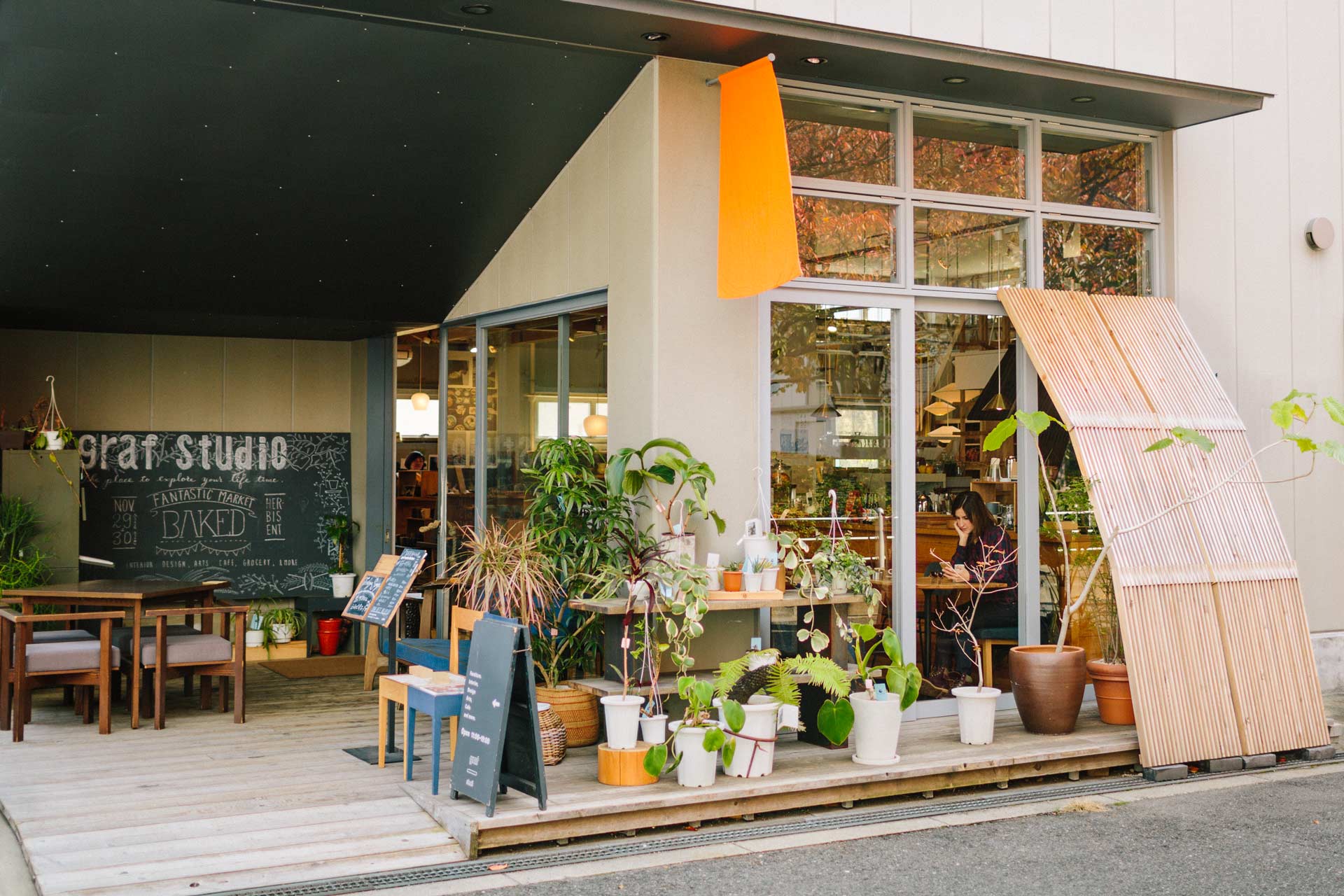
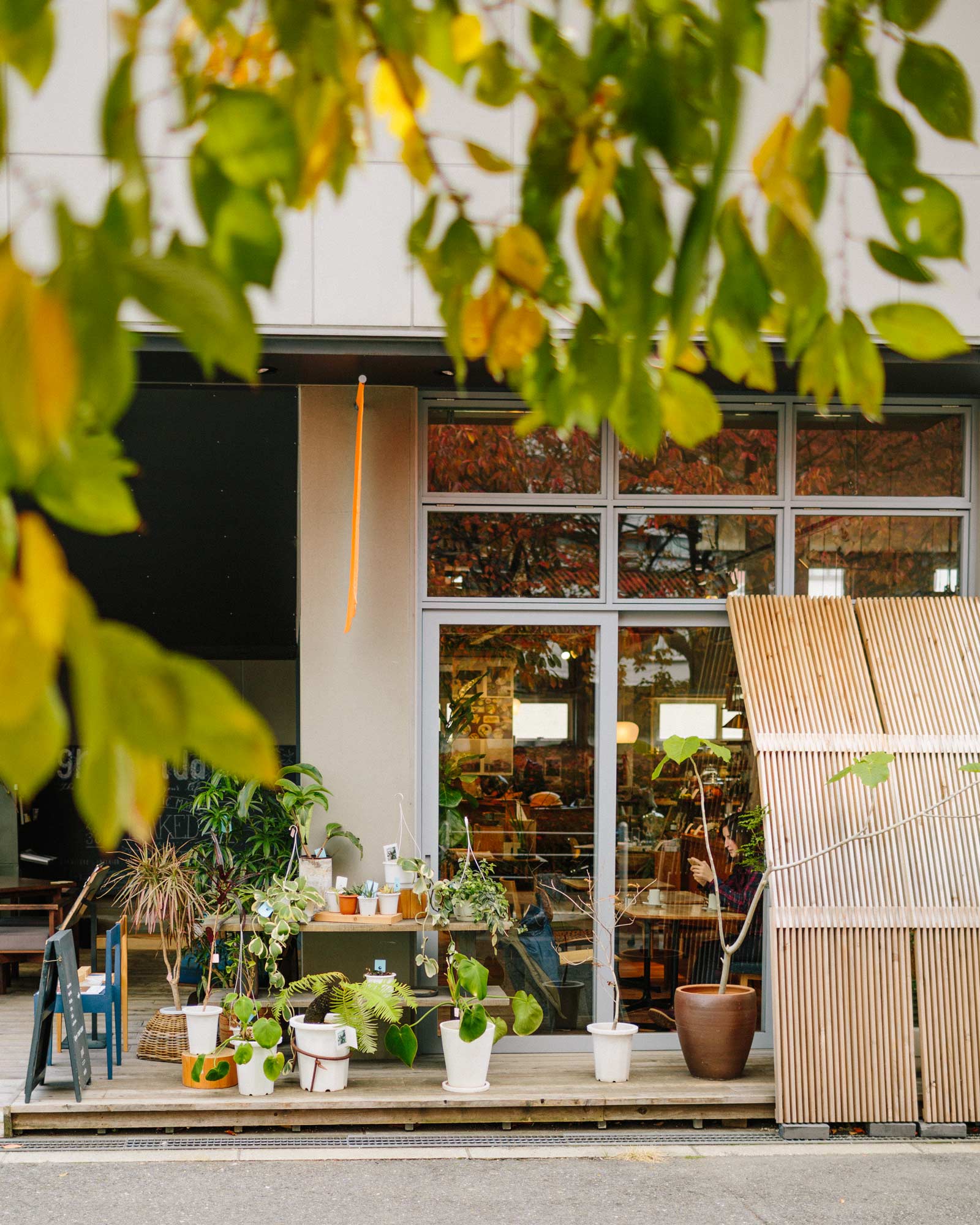
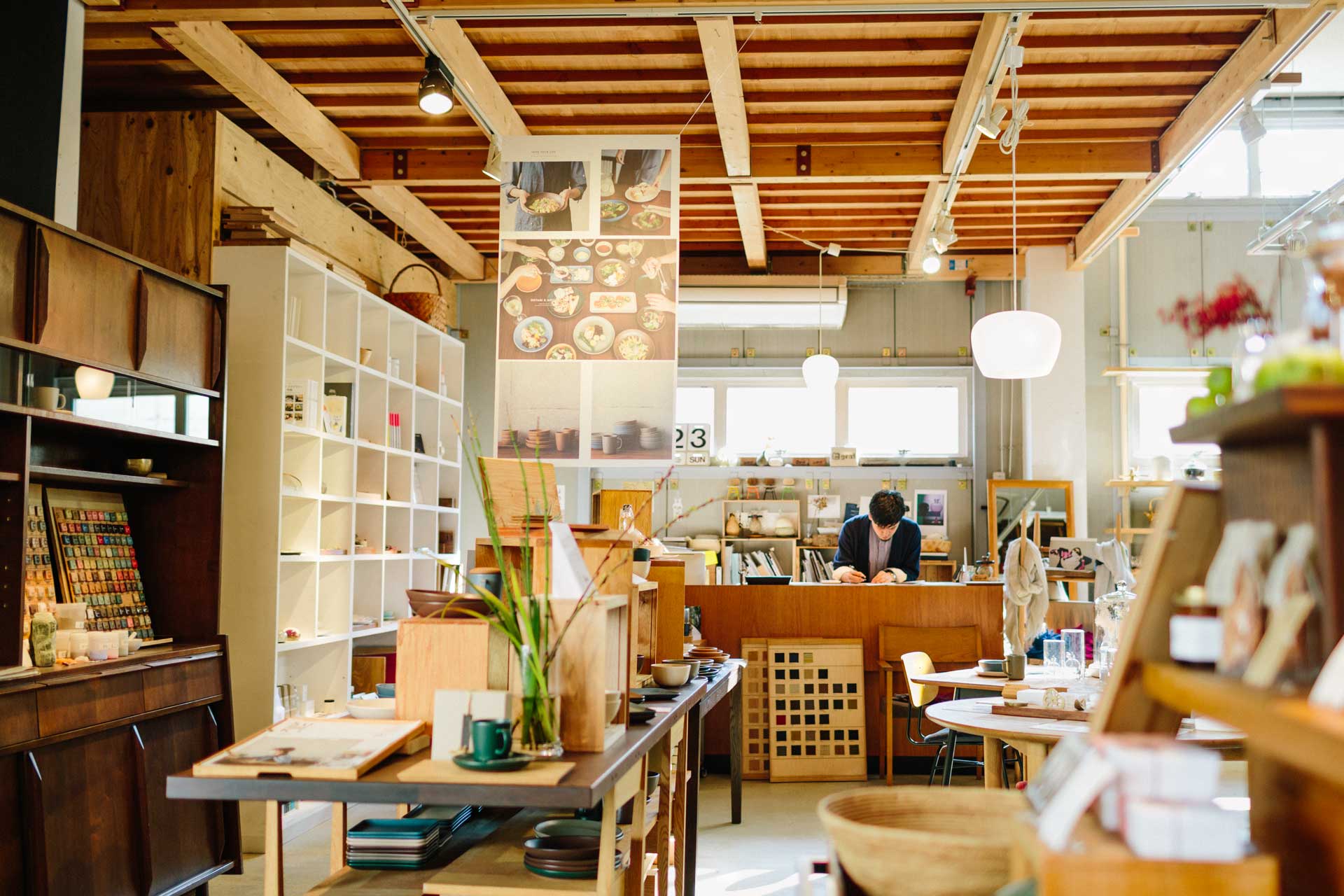


Fukuoka would be our last and furthest stop on the southern coast of Japan. It was another night of walking through crazy malls and winding side streets, but we were exhausted from all the traveling and took a night off of photos to take it all in. BUT we did break out the camera for one very worthy capture at an owl cafe we came upon.
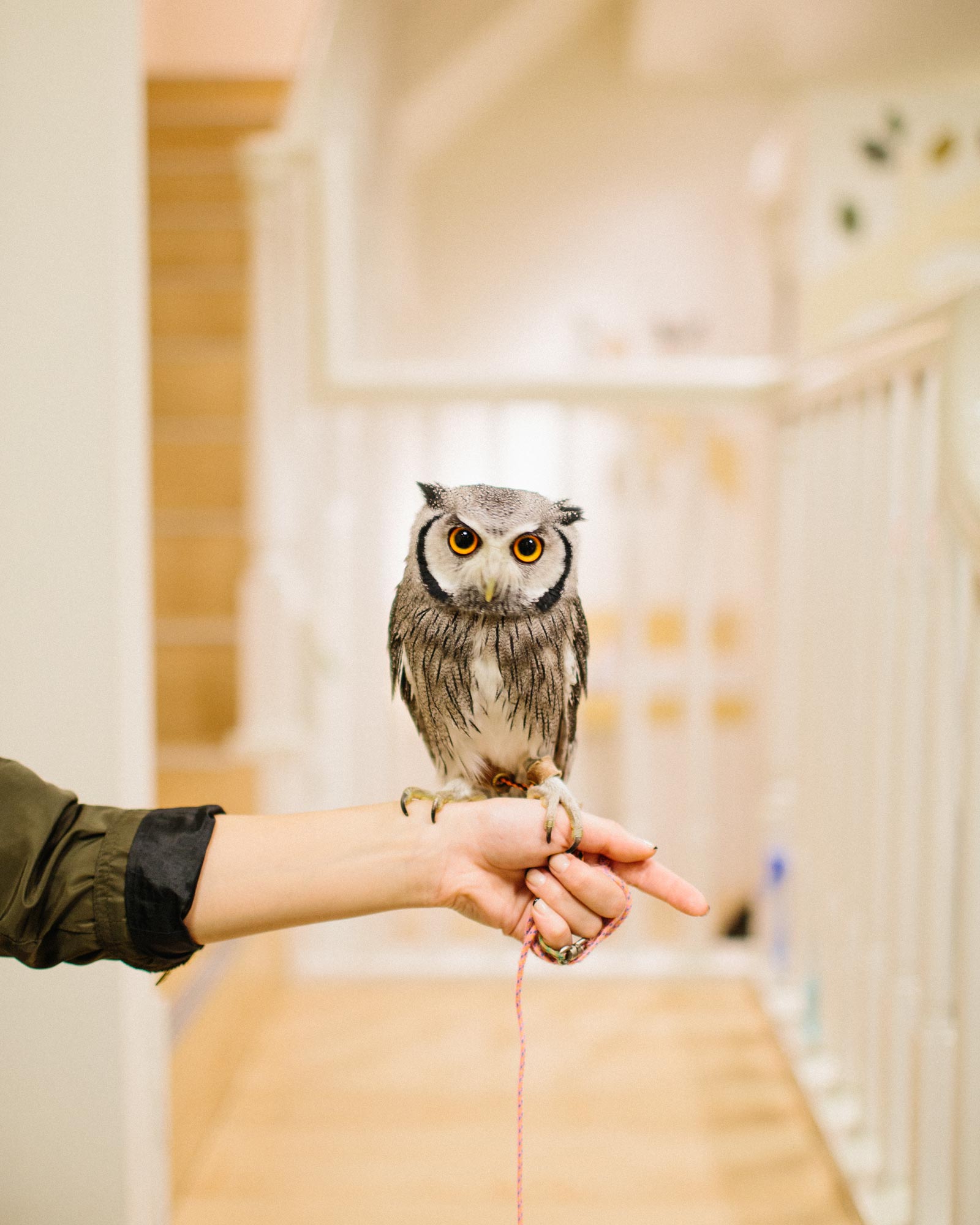
By this point in our travels, we had taken a total of 20 hours worth of trains since we had left Tokyo. We look back at all those hours fondly — each and every one of those rides yielded some of the most awe-inspiring sights that we had had the pleasure of jetting past. We can honestly say that one of our favourite things to do in Japan is grab a few beers, load up on snacks, sit on a train (preferably a Shinkansen) and stare out the spacious windows.
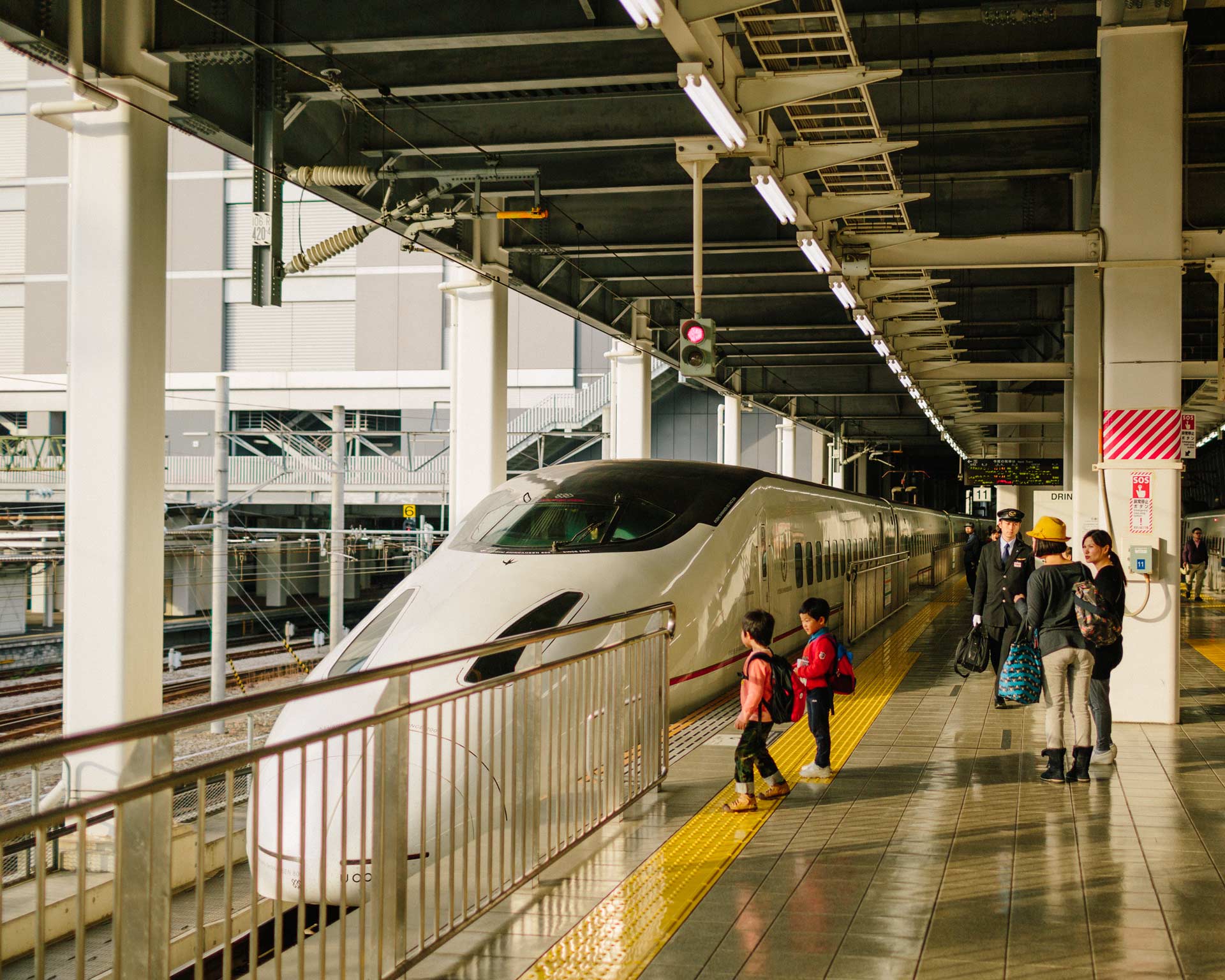
As we rolled our luggage over to Fukuoka station and carried it up the long sets of stairs leading to our terminal, we came face-to-face with the last bullet train we’d take for the remainder of our stay. It was with heavy hearts that we entered it and found our seats. It was a sad moment, but we took solace in the fact that our adventure wasn’t over yet- we had three more days left in Tokyo. As beautiful of an idea as that was, we couldn’t help but simply stare out of our window for the next 5 hours.